Popular Fashion Trends From 1975-1985 When Was Big Hair in Style
Acdx // Wikimedia Commons
Popular fads from the twelvemonth you were born
Whether purchasing an Elvis Presley tape, successfully completing a crossword puzzle (without cheating), or eating a cronut, chances are you've jumped on a fad bandwagon at some point in your life.
Merriam-Webster defines fads equally "practices or interests followed for a time with exaggerated zeal: craze." While some fads and trends practice, indeed, fall into the temporary category (recollect goldfish swallowing), others, such as Barbie dolls, remain venerable icons to this day.
Stacker scoured historical accounts, company websites, news media, and other sources to notice the well-nigh popular fads from 1920 to today. They range from the bizarre to the energetic; from pageants, games and toys, candy, books, and national heroes, to touch on just a few. Some you've never heard of, some are beyond outrageous, and others are mainstays of American life.
Mayhap you've participated in, or still practice, at least one of these. Perhaps your parents, grandparents, and great-grandparents experienced these fads over the years, passing forth their honey for the longer-lasting crazes through the decades. And mayhap, yous and your kids are involved with 1 now or volition pass them along to the next generation of eager youth and adults looking for pastimes and pop entertainment—or only manifestly silliness.
Read on to detect the nigh interesting fads from each twelvemonth since the Roaring '20s.
You may also like: Where Usa first ladies went to college
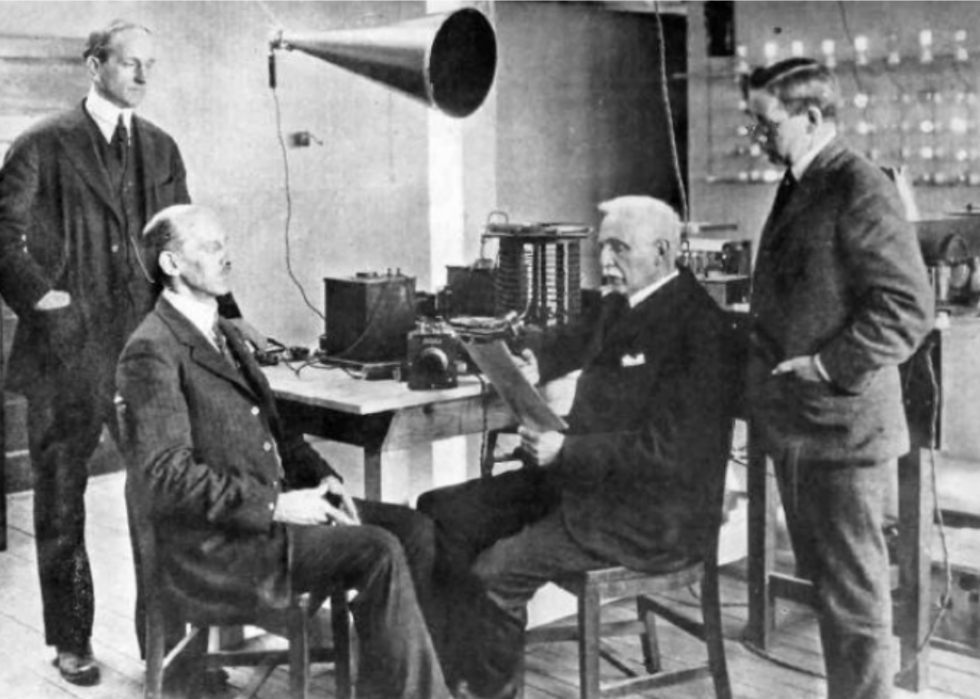
i / 101
1920: Commercial radio
The showtime commercial radio station in the nation, Pittsburgh radio station KDKA, hit the airwaves in 1920 and started a moving ridge of popularity. Five hundred stations hit the airwaves within the span of three years; by the cease of the decade, 12 million households had radios. Although commercial radio remains relevant to this twenty-four hours, the growing popularity of television by the 1950s contributed to a pass up in radio listeners.
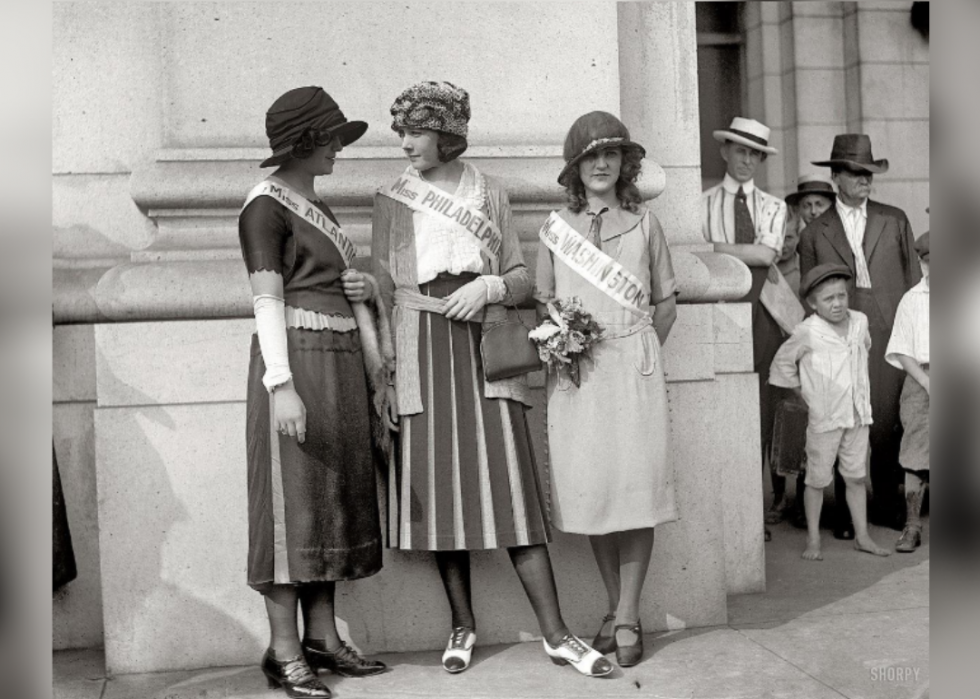
ii / 101
1921: Miss America
The commencement Miss America Pageant was staged in Atlantic City and it continues to this 24-hour interval. Merely reports of controversy, including allegations of sexual and sexist remarks, and only partial payments of scholarships by pageant organizers, could darken its future.
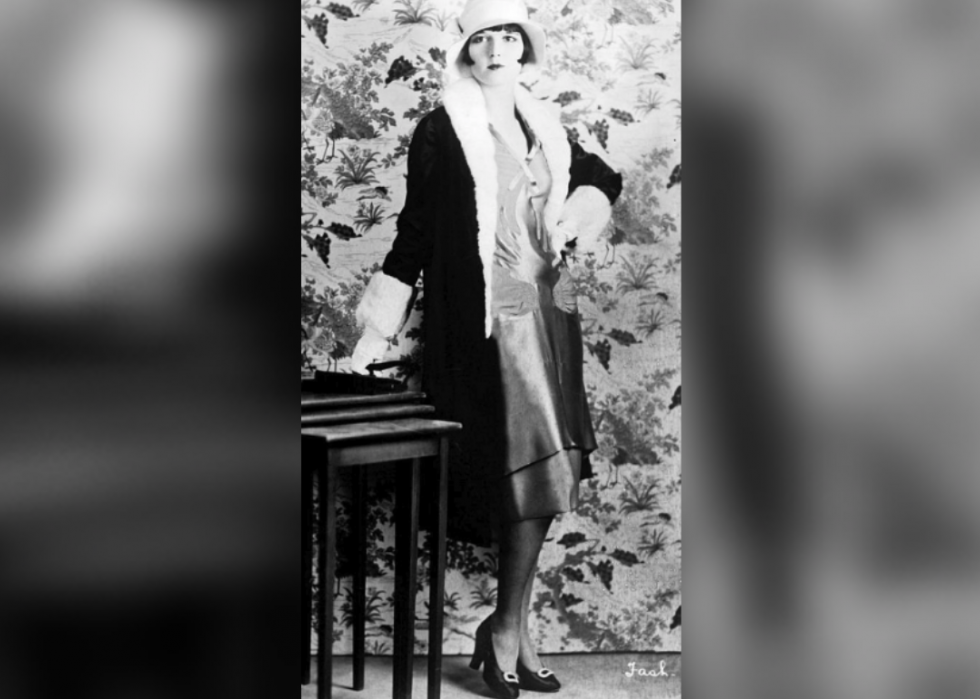
3 / 101
1922: Flappers
Self-defined flapper Ellen Welles Page wrote in 1922 of living the flapper lifestyle: a free-spirited, Charleston-dancing fad for young women who wore bobbed hair, powdered their noses, and wore fringed dresses and other striking styles. The Cracking Depression is blamed for the demise of that lifestyle and look.
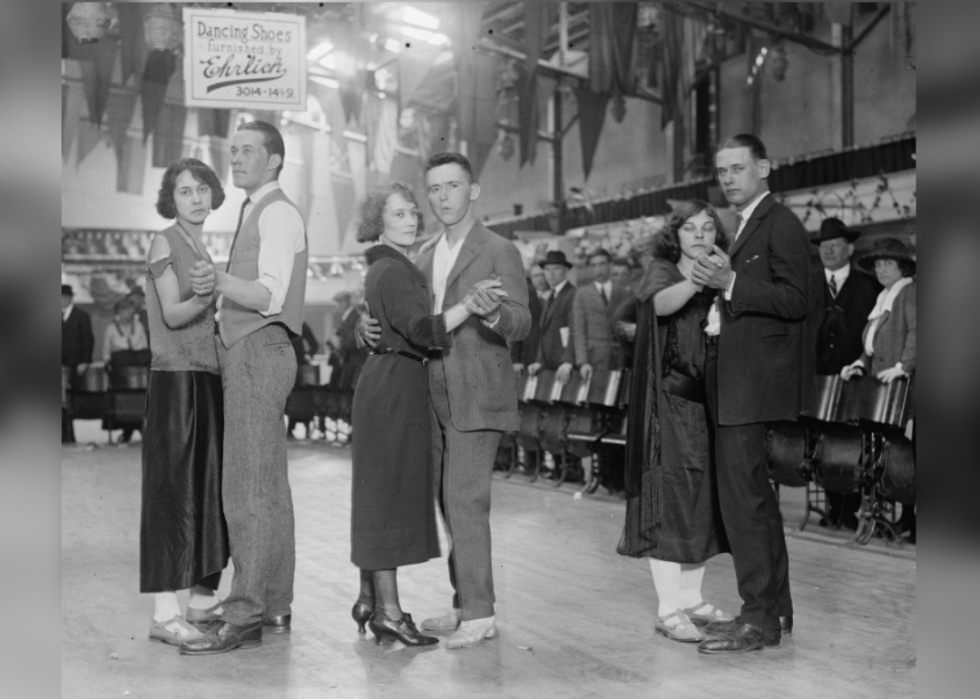
4 / 101
1923: Dance marathons
This fad originated in Washington state when Alma Cummings danced for 27 straight hours with half dozen different partners. Dance marathons involved couples who danced at local clubs for as long as their legs would hold them up, competing for money. The craze faded by the late 1930s equally World State of war II loomed.
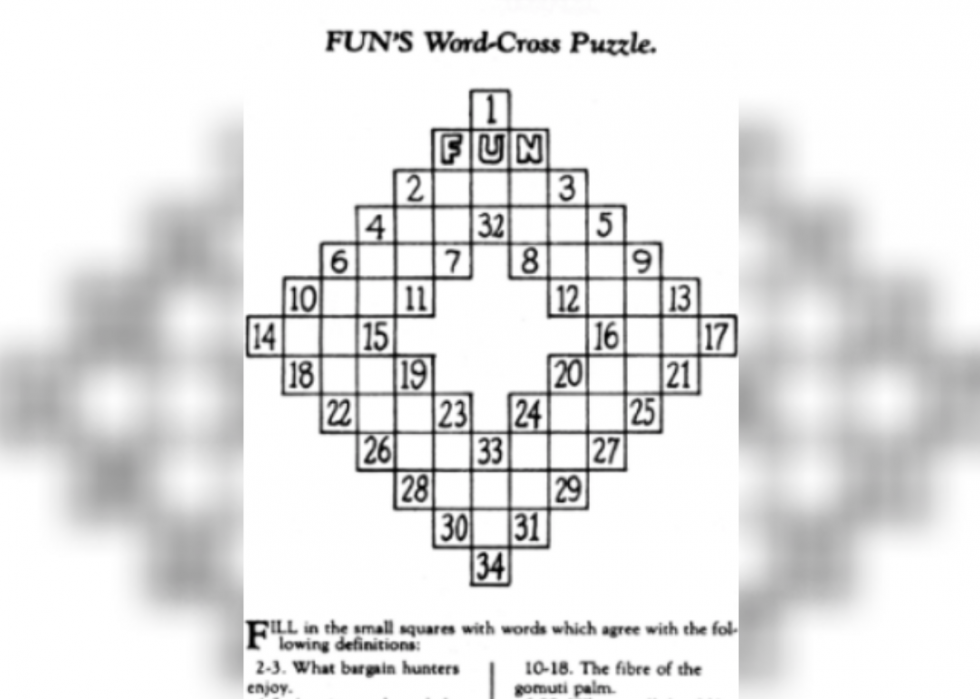
5 / 101
1924: Crossword puzzles
Richard Leo Simon and Max Lincoln Schuster comprised the team that published the start "Cross Word Puzzle Book," and they remain one of the near popular puzzles on newsstands today. Simon and Schuster'due south book came complete with a pencil, which helped launch crossword puzzles into a national phenomenon.
You lot may also like: How Halloween has changed in the by 100 years
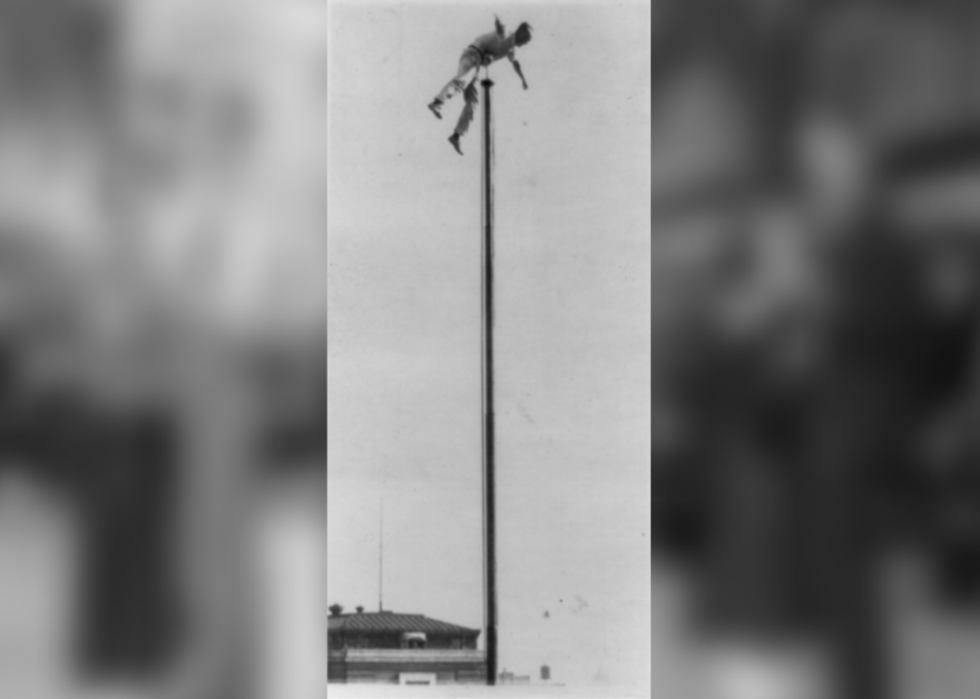
half dozen / 101
1925: Flagpole sitting
This curious fad began afterwards a friend dared thespian Alvin "Shipwreck" Kelly to sit on the top of a flagpole. He obliged—and remained upwardly tiptop for 13 hours and 13 minutes. Somehow it caught on, and soon sitters gear up records of 12 days, 17 days, and 21 days, until Kelly himself took the all-time record of 49 days in 1929. Like many on the listing, flagpole sitting'due south eventual fall from favor came effectually the aforementioned fourth dimension equallythe kickoff of the Great Depression.
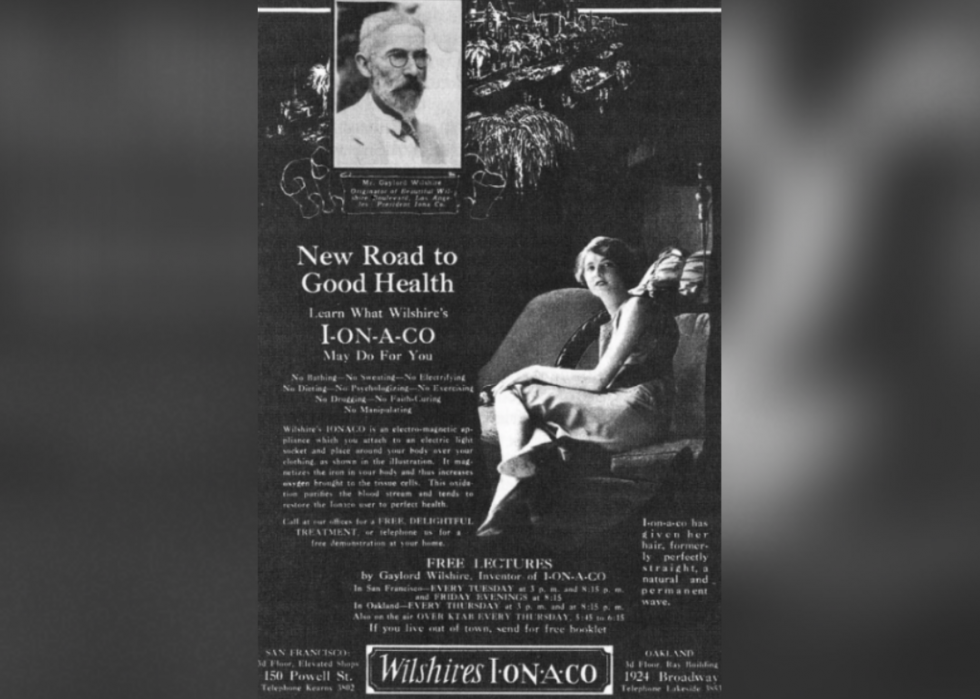
seven / 101
1926: The Ionaco
Adult and used past G**lord Wilshire a twelvemonth earlier, the electric belt named the Ionaco reached height sales in 1926. Supposedly a device to help magnetize the iron in the body and increase oxygen in the claret (thereby increasing health), the Ionaco sold virtually 50,000 units. Just the American Medical Association criticized the inventor's claims, and device sales declined by 1927.
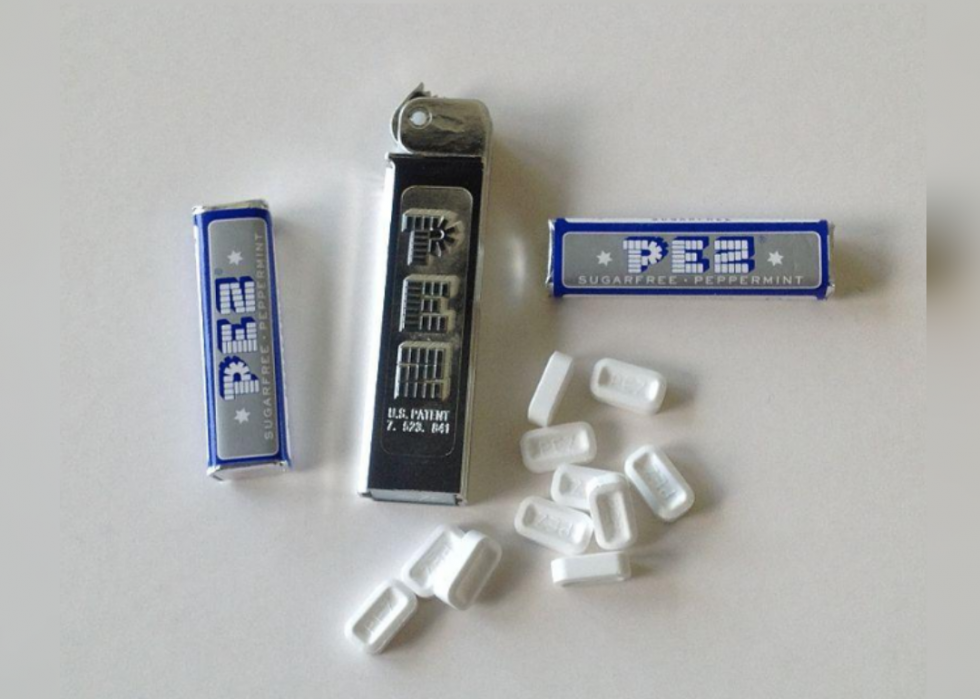
8 / 101
Gerka // Wikimedia Commons
1927: Pez
Developed by Austrian candy executive Eduard Haas, Pez was a minor mint processed named for a shortened German language word for peppermint. First sold in modest tins, the candy sold well for more than twenty years, until Pez dispensers came out in 1948. Pez's popularity continues to this twenty-four hours with the iconic Star Wars line and other grapheme dispensers.
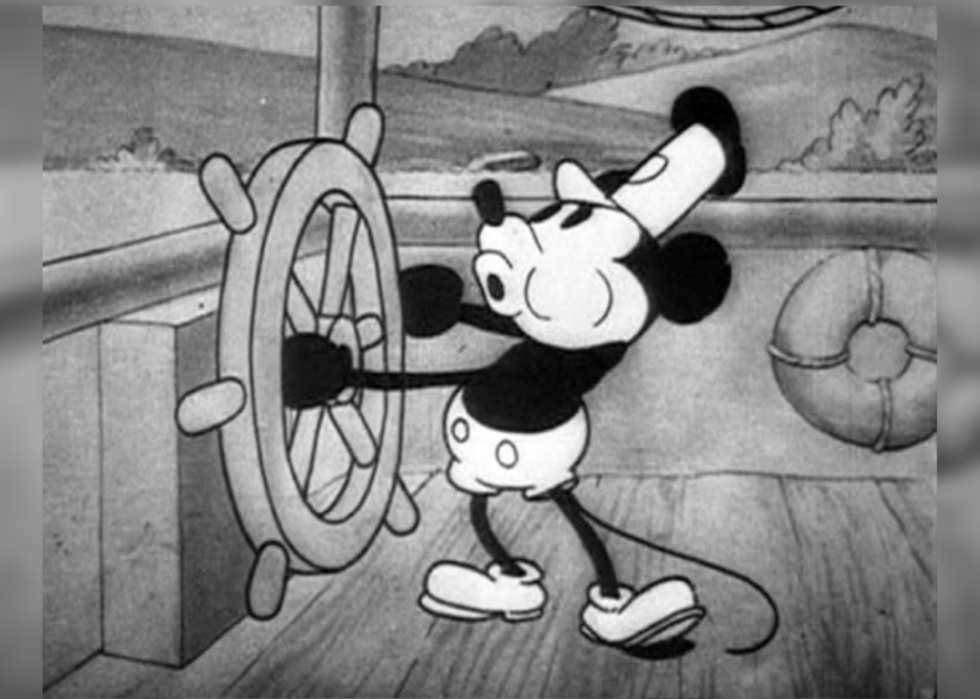
9 / 101
1928: Mickey Mouse
Premiered by Walt Disney and Ub Iwerks at the Disney Studios in the 1928 cartoon "Steamboat Willie," Mickey Mouse appeared in his showtime characteristic-length film in 1940 and is withal ane of the most love cartoon characters of all time.
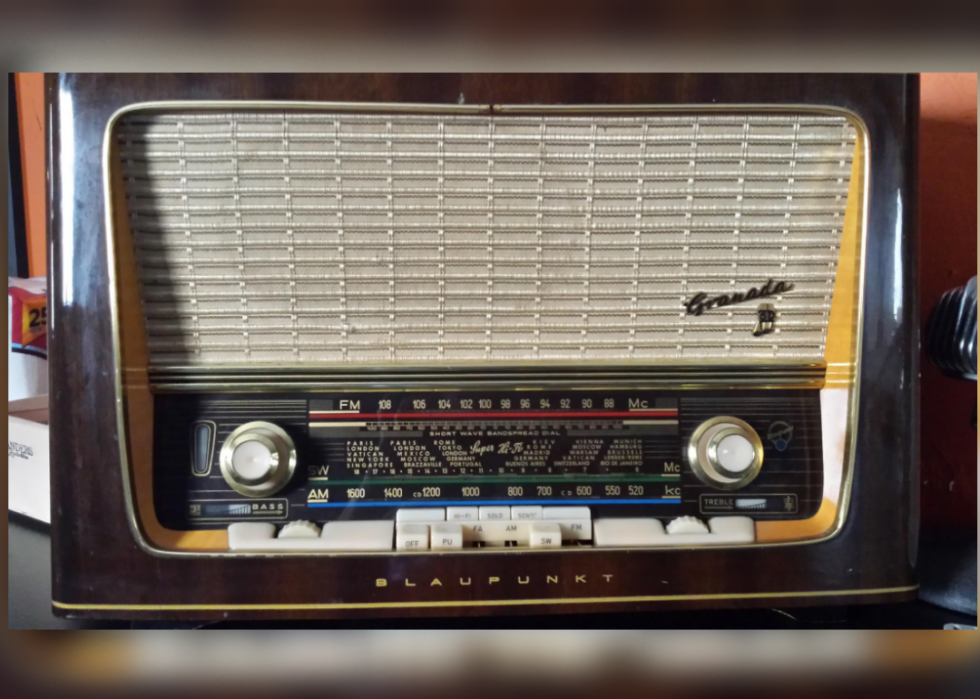
10 / 101
1929: Car radios
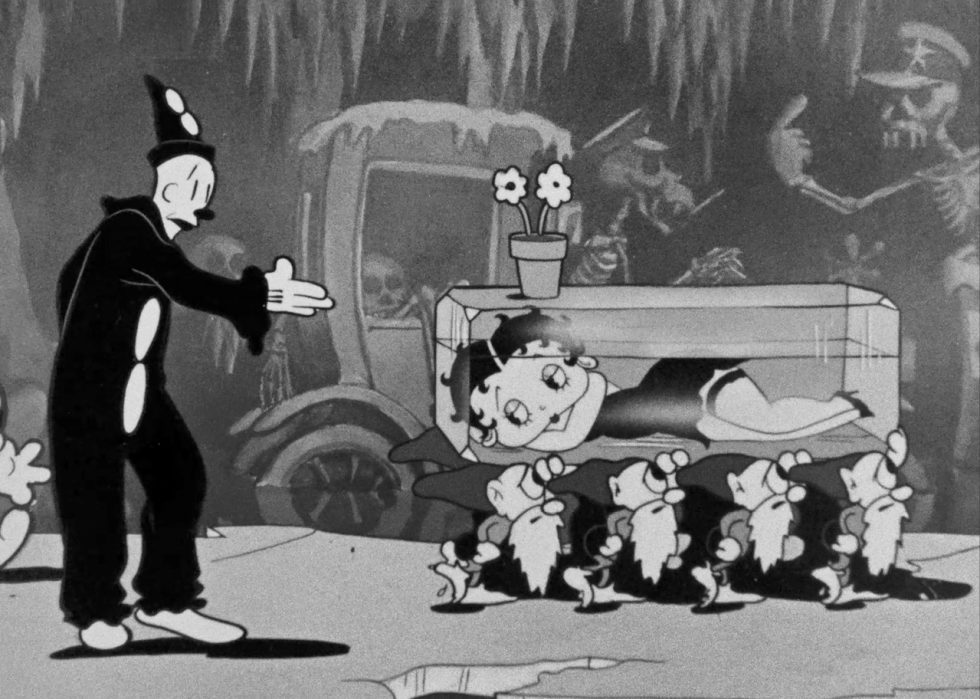
eleven / 101
1930: Betty Boop
The offset cartoon flapper, Betty Boop appeared in the 1930 animated short "Dizzy Dishes." She started out drawing life equally an anthropomorphic domestic dog, but evolved into her human being course in 1931 with her first starring role in "Betty Coed." Her popularity has led to a virtual museum'due south worth of merchandise and movies.
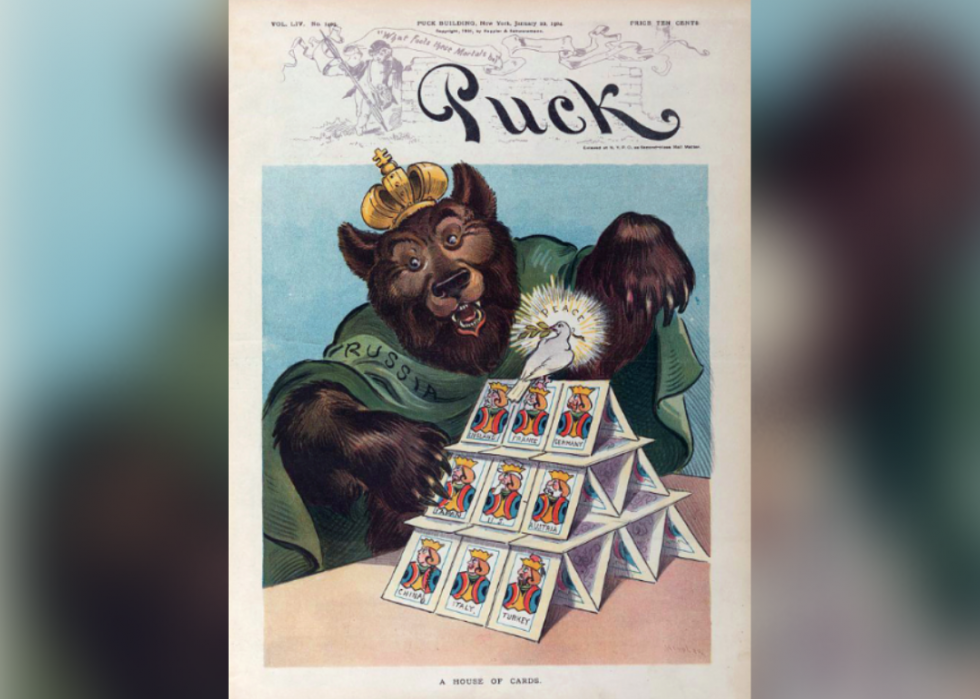
12 / 101
1931: New York humour magazines
With the popular launch of humor mag "Ballyhoo," publishers came out with imitations including "Boloney" and "Tickle-Me-Likewise" in attempts to ride the wave of the original—which reached 2 1000000 copies early on the next yr. Although enthusiasm for the genre waned within a year, "Clack" remained pop for several decades.
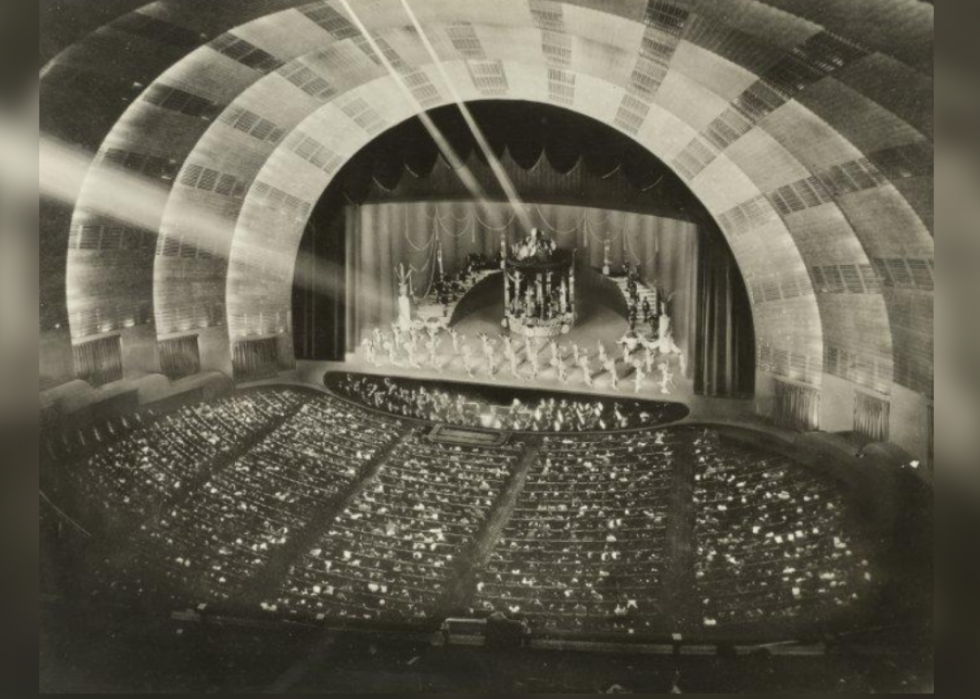
13 / 101
NYPL // Wikimedia Eatables
1932: Radio City Music Hall
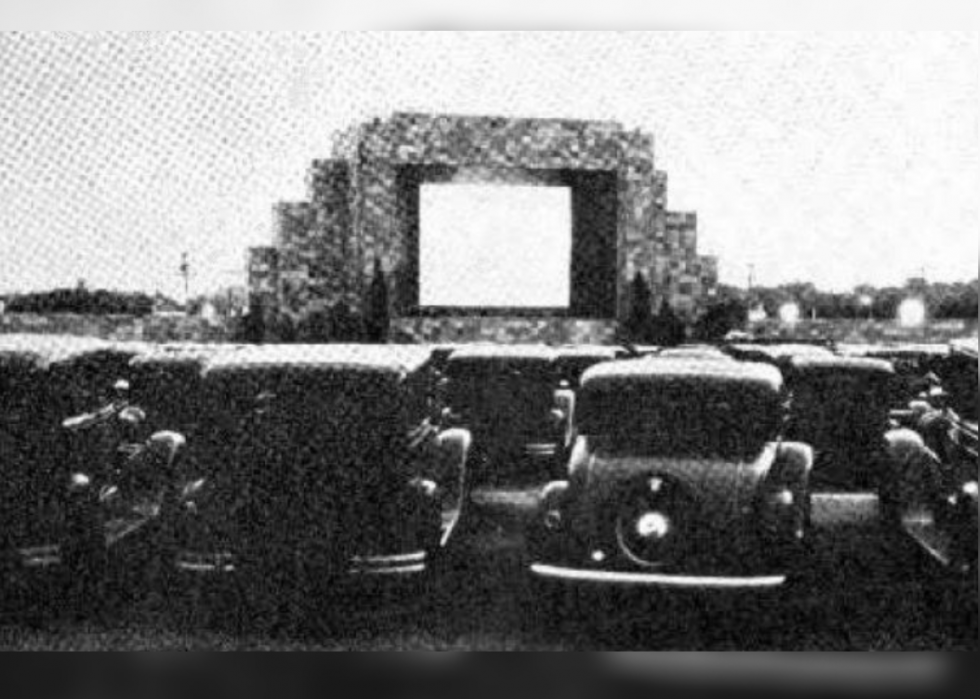
14 / 101
1933: Bulldoze-in theaters
Begun in 1933 by Richard Hollingshead, drive-in theaters took off with the first in Camden, New Bailiwick of jersey. Starting with 100 theaters, the amount of these venues jumped to 2,200 in 12 years. Although their numbers peaked at 4,063 in 1958, drive-ins have been disappearing at a rapid rate. Amid the reasons for their turn down are irresolute attitudes toward cars to smaller vehicles, the appearance of home movies, and shifting economics of the picture show industry; but some notwithstanding survive.
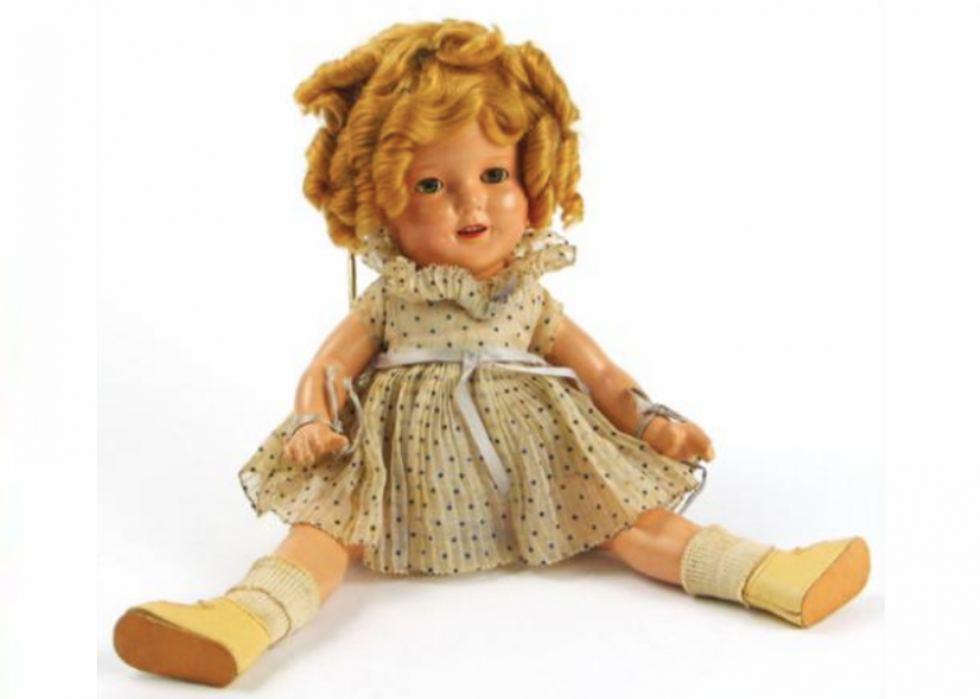
15 / 101
1934: Shirley Temple doll
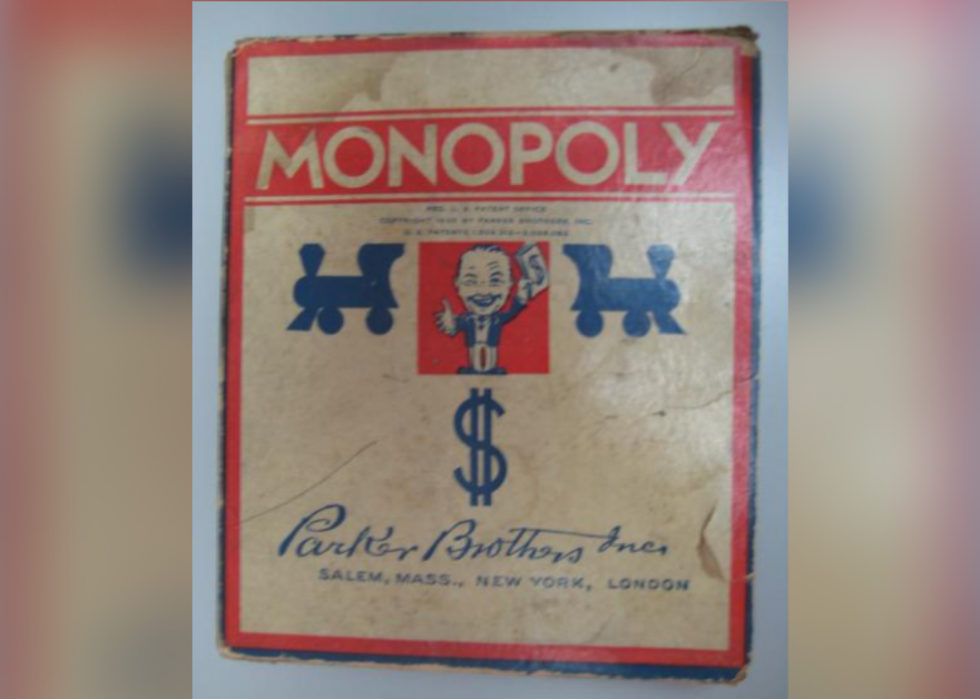
16 / 101
Lucianomarq // Wikimedia Commons
1935: Monopoly
Monopoly was introduced by Parker Brothers in 1935 and sold 20,000 sets in one week. It is still one of America'due south most pop board games and is produced in countless themes. The longest game of Monopoly reportedly lasted seventy days.

17 / 101
Marit & Toomas Hinnosaar // Flickr
1936: Girl Spotter cookies
Although Daughter Scout cookies were offered in local councils as early as 1922, it wasn't until 1936 that the national organization began licensing commercial bakers to produce the treats for the masses. Flavors and types of the iconic cookies evolved over the years, and the scouts have sold $700 million worth since 1999.
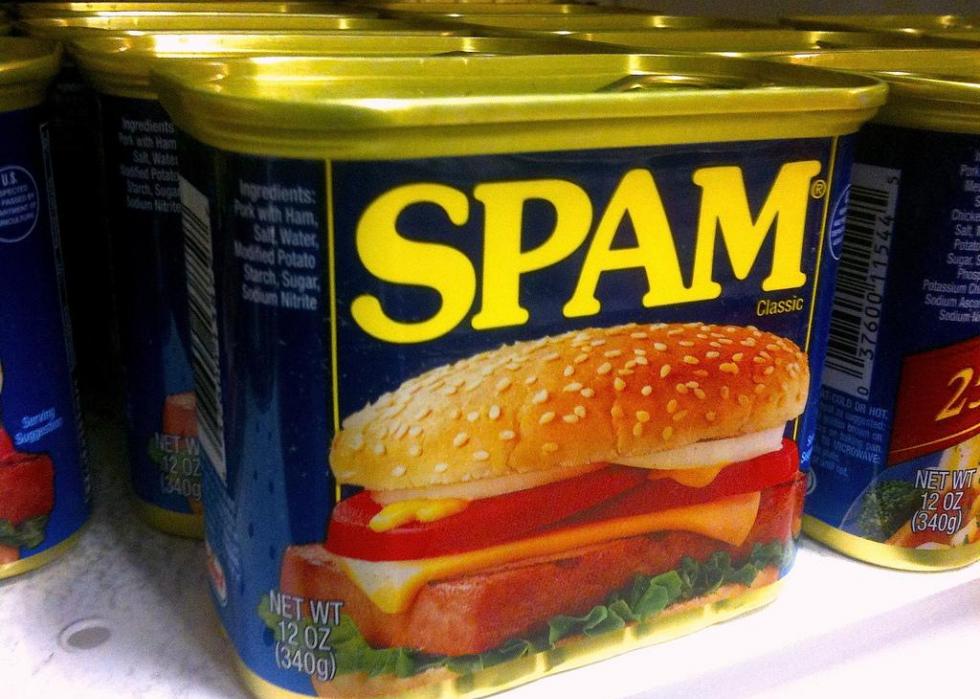
18 / 101
1937: Spam
When Hormel launched Spam, it became a consumer hit—complete with fan clubs that honored and praised this canned meat product. Made of pork with ham meat, h2o, white potato starch, sugar, and sodium nitrite, Spam all the same spawns new recipe ideas and contests, keeping the product internationally popular.
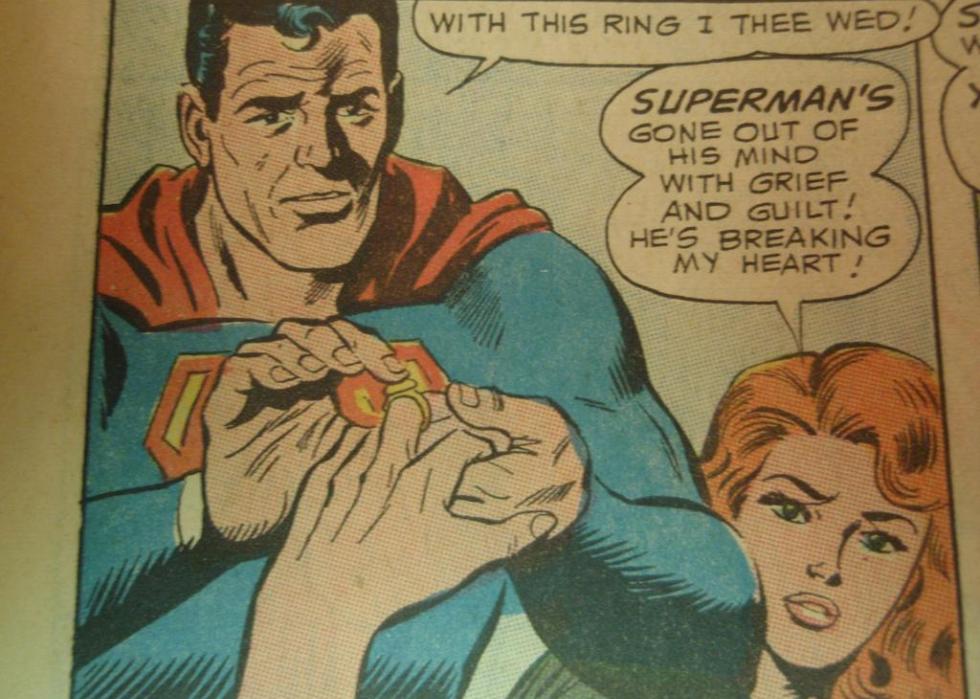
xix / 101
1938: Superman comics
Action Comics released the get-go Superman comics in 1938, which led the Man of Steel to become the starting time superhero to take his own comic book the post-obit year—eventually leading to an empire including Television receiver and flick series, plus trade galore. Superman is believed to be the offset of the golden historic period of comics, and publications featuring him continue to be updated and revamped past DC Comics.
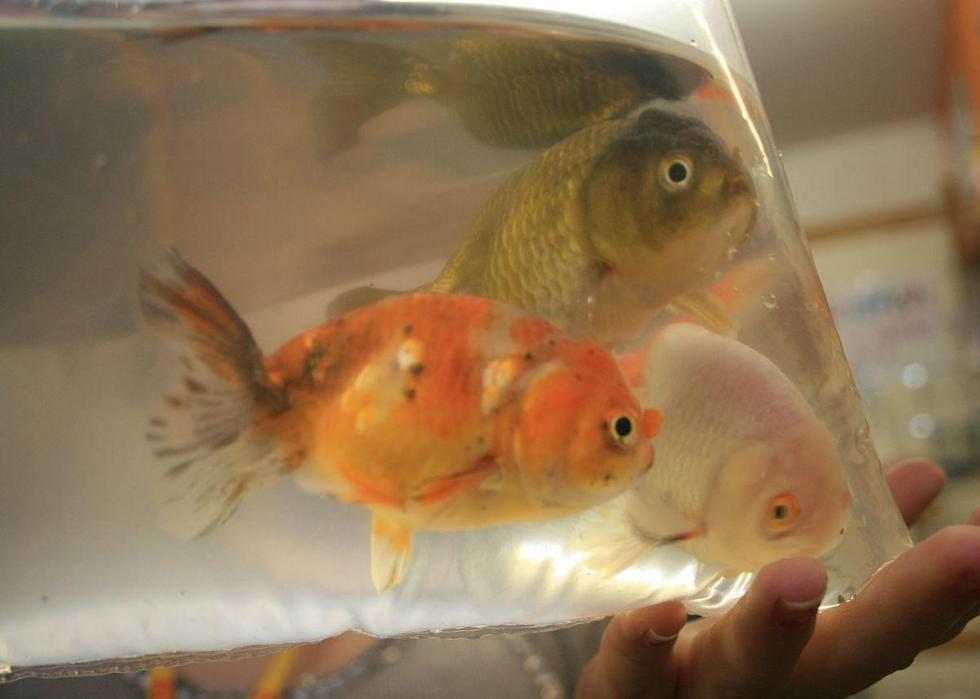
20 / 101
Michelle Jo // Wikimedia Eatables
1939: Goldfish swallowing
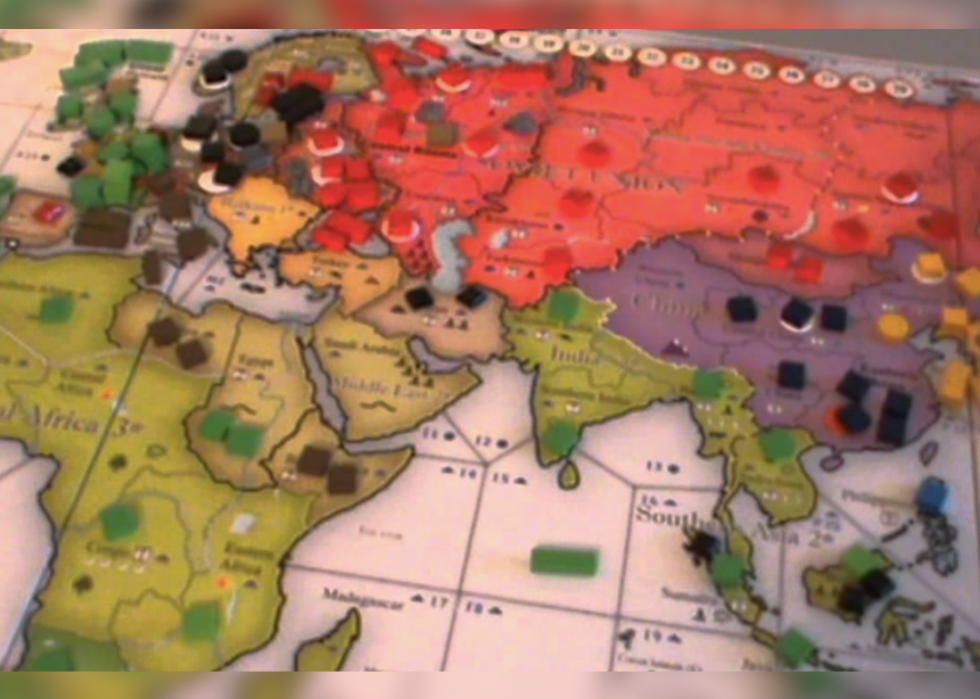
21 / 101
Boardgameblogger // Parker Brothers
1940: 'Conflict'
Parker Brothers created this popular war-themed board game in 1940, depicting both land and sea battles. Players moved miniature military pieces on a grid, trying to invade opponents' spaces and capture their pieces. Parker Brothers produced the game until about 1972.
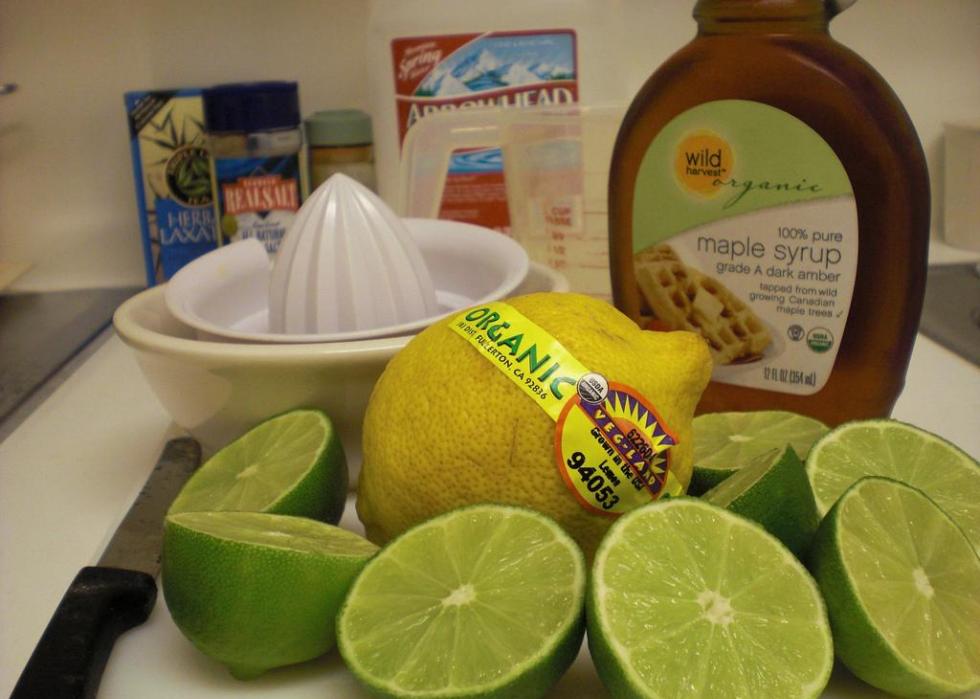
22 / 101
Casey Serin // Wikimedia Commons
1941: Master Cleanse
Likewise known equally the "lemonade diet," the Primary Cleanse promised to eliminate cravings for junk nutrient, alcohol, tobacco, and drugs. According to creator Stanley Burroughs, it required consuming a mix of lemon or lime juice, maple syrup, h2o, and cayenne pepper 6 times a day for at least 10 days. Beyoncé reportedly brought the nutrition back into popularity in 2006, claiming she lost 20 pounds in two weeks.
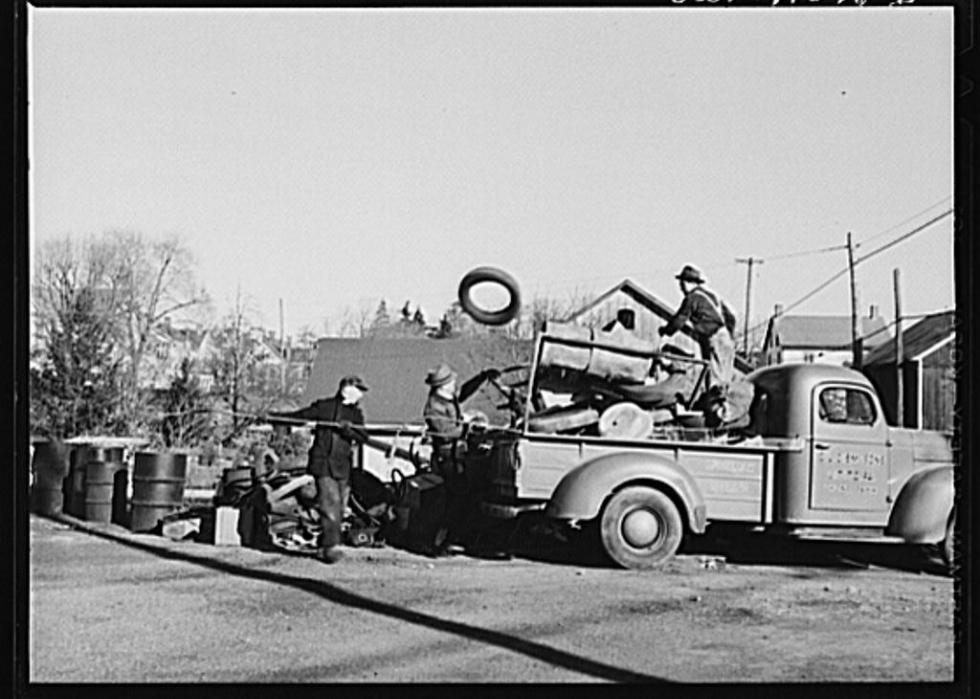
23 / 101
1942: Scrap drives
Americans in 1942 took part in national chip drives to help in the war endeavour. Recycling unused or unwanted metal helped build war equipment. Rubber, paper, kitchen fat, tin cans, rags, and newsprint were gathered upwardly. Even recorded music was salvaged and archived. The effort continued through the end of Globe State of war Ii.
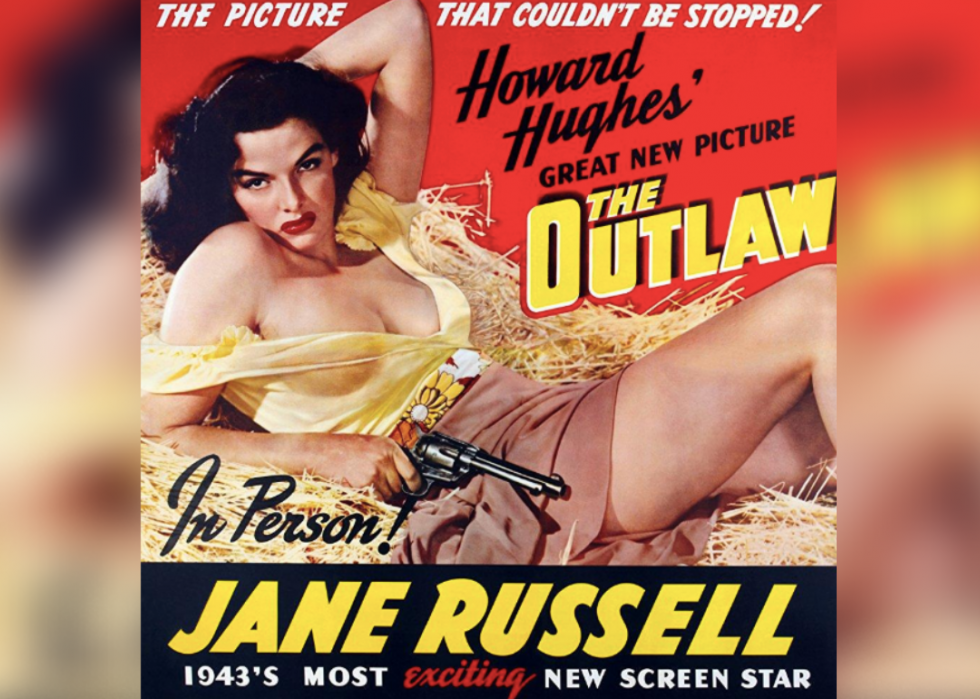
24 / 101
Howard Hughes Productions
1943: The conical bra
Moving-picture show producer Howard Hughes designed this cantilevered bra for actress Jane Russell in 1943 in the moving-picture show, "The Outlaw." After seeing how the bra enhanced Russell's effigy, brassieres that could "lift and carve up" became popular beyond America.
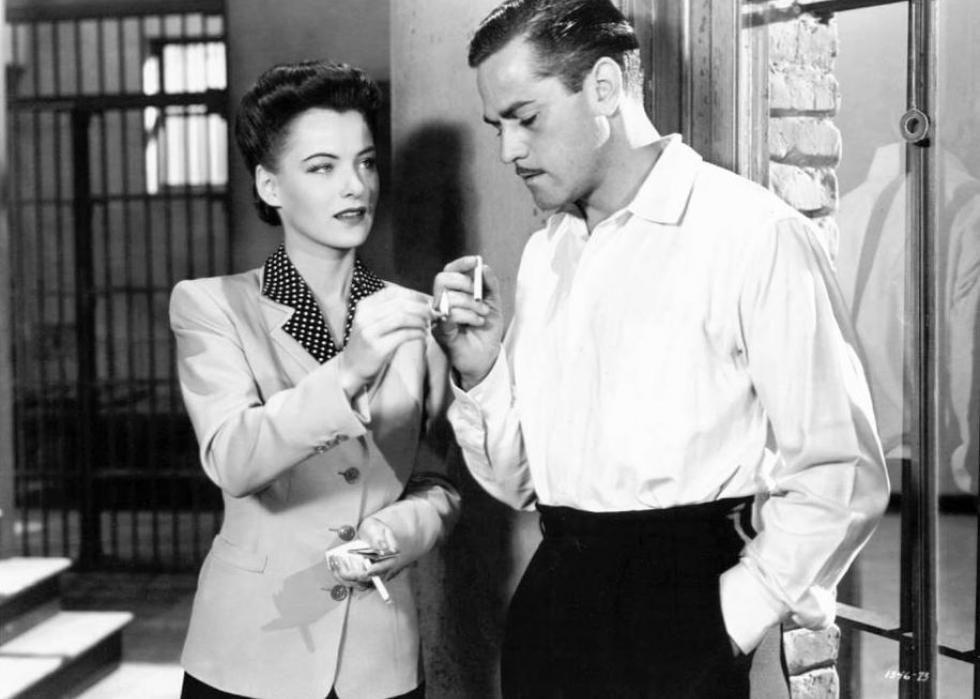
25 / 101
1944: Girls wearing men'southward article of clothing
The May fifteen, 1944 edition of Life mag explored the then-novel concept of immature girls wearing men's wear, such as shirts, bow ties, sweaters, and jackets. Boys most of the time kept information technology far more casual, often wearing bluish jeans or corduroys rolled at the bottom. To this day, menswear-inspired fashion for women remains a archetype wardrobe option.
Y'all may also like: American history from the year you were born
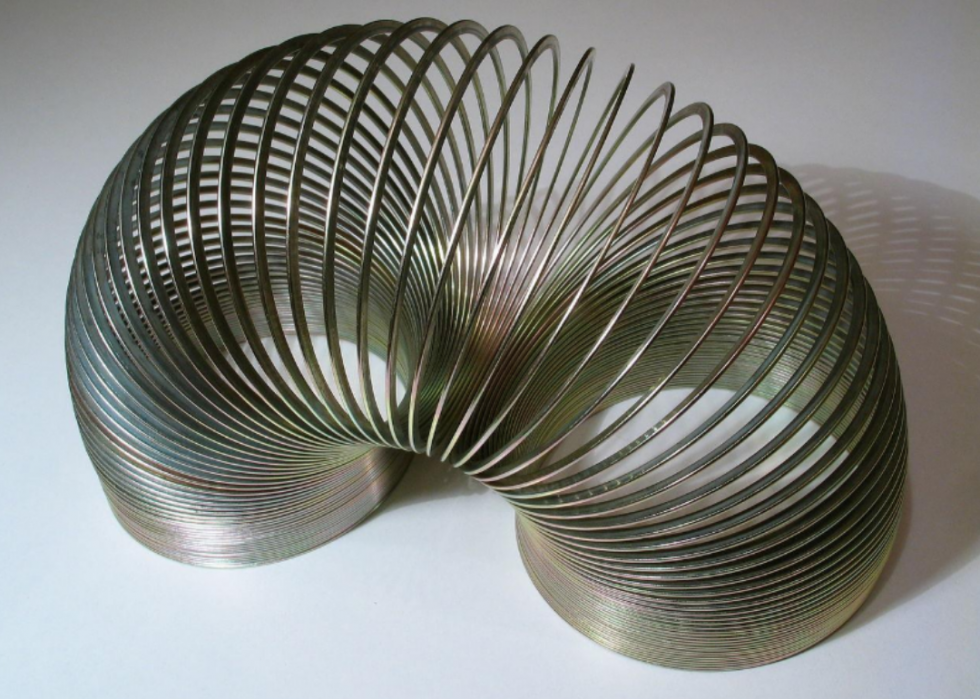
26 / 101
Roger McLassus // Wikimedia Commons
1945: Slinky
Invented by Richard T. James and launched for the 1945 Christmas flavor by Gimbels of Philadelphia, a Slinky is eighty feet of wire coiled into a two-inch screw that "walks" down the stairs. More than 300 million of the metal toys take sold since Slinky's release.
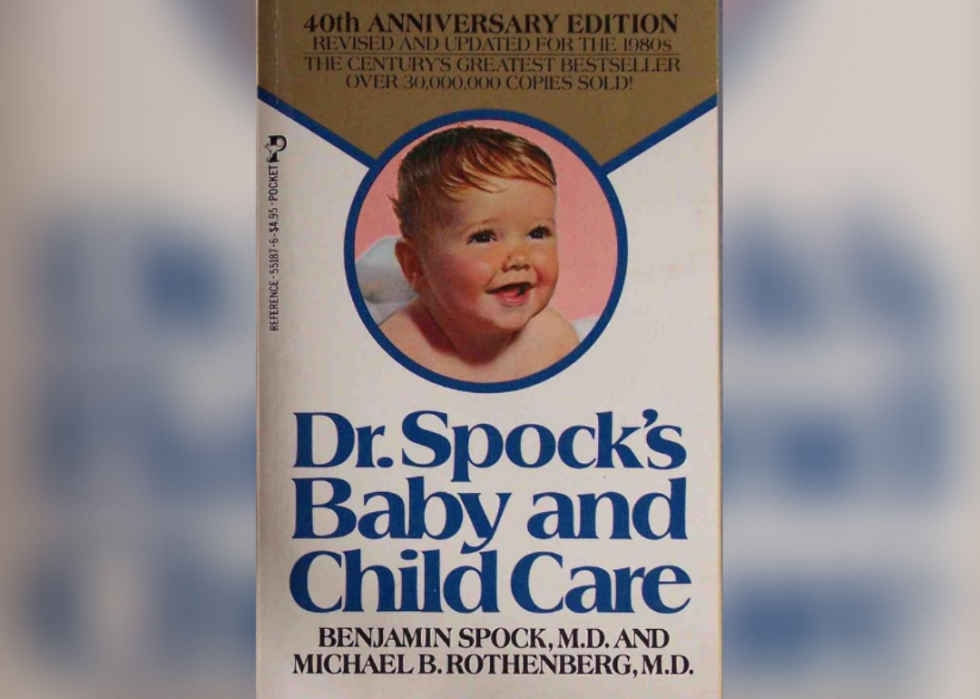
27 / 101
1946: 'Infant and Child Care' by Dr. Spock
Originally published under the title "The Common Sense Book of Baby and Child Intendance," Dr. Benjamin Spock's iconic book encouraged parents to trust their ain instincts when raising their children. It was renamed in 1957 and revised seven times, selling more than 50 meg copies in 42 languages.
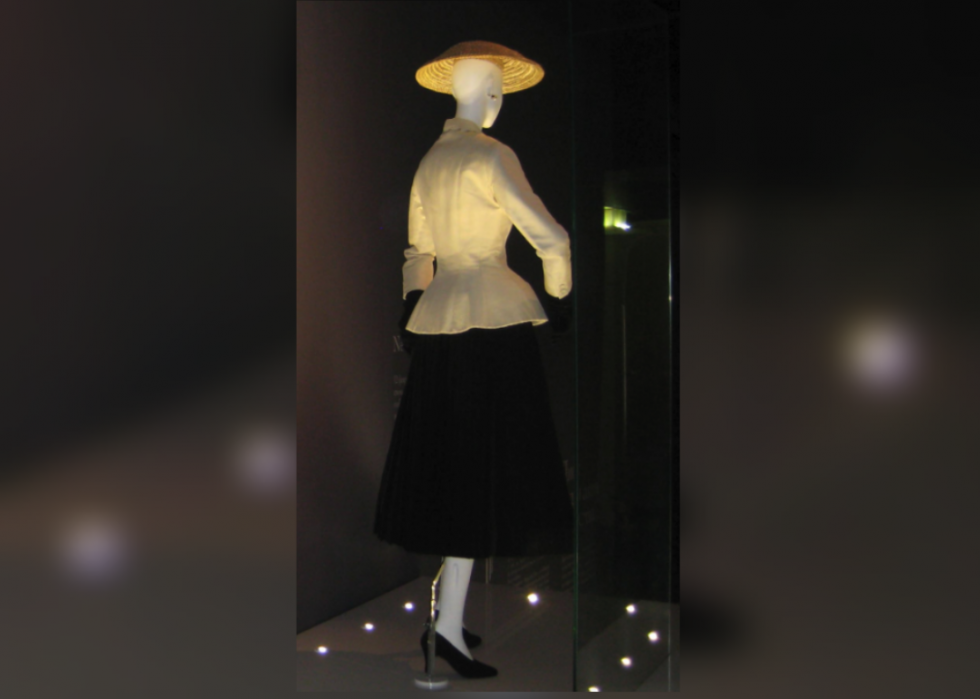
28 / 101
shakko // Wikimedia Commons
1947: The New Look Revolution
Popularized by Christian Dior at a Paris exhibition, the New Expect Revolution featured Dior'southward haute couture collection of styles that would enhance femininity at the cost of "austere, masculine manner." The look included rounded shoulders, cinched waist, and a full A-line brim, and, although it nigh disappeared in the 1960s, it has experienced a revival since the 1990s.
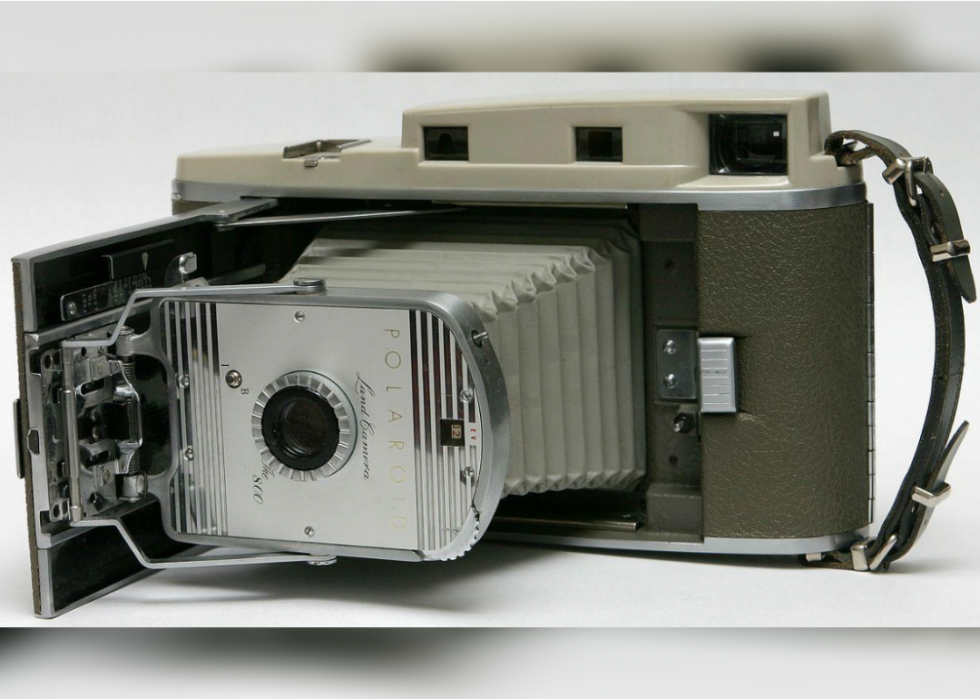
29 / 101
Cburnett // Wikimedia Eatables
1948: Polaroid photography
The year 1948 was when the Polaroid Country Camera was first sold to the public, providing a one-stride photography procedure that provided instant gratification. It was an immediate hit and was used by Ansel Adams and other renowned photographers. The device remained more or less popular until around 1991 when digital photography began to appear.
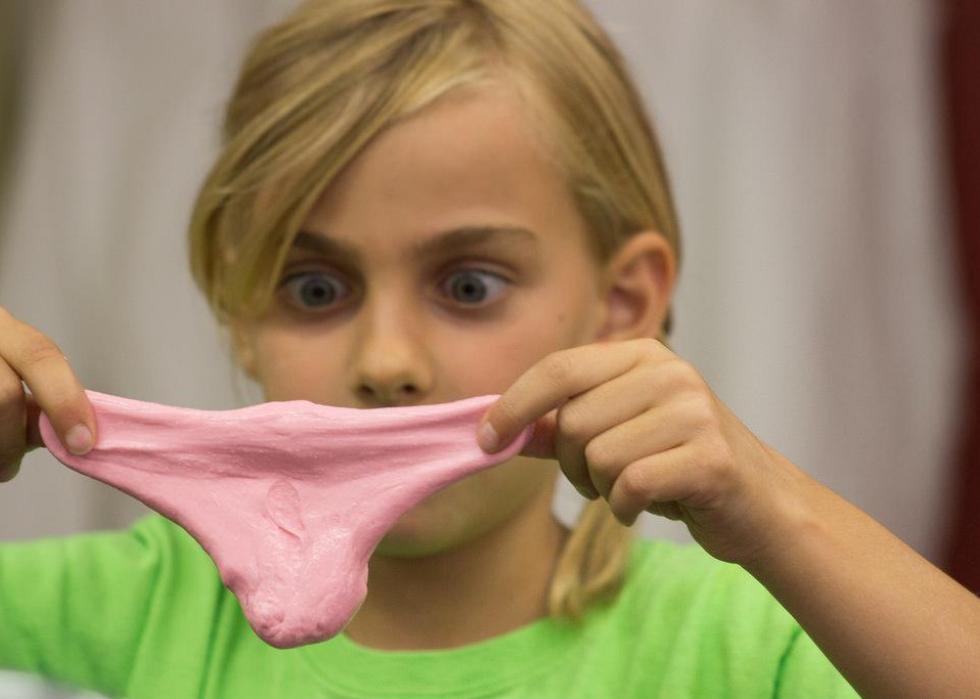
30 / 101
Academy of the Fraser Valley // Flickr
1949: Airheaded Putty
Peter Hodgson invested $150 to create i-ounce bags of Empty-headed Putty in plastic eggs, and it became an instant success. Millions of the pliable goo take been sold since, and keep to sell today.
You may also like: 30 famous student protests
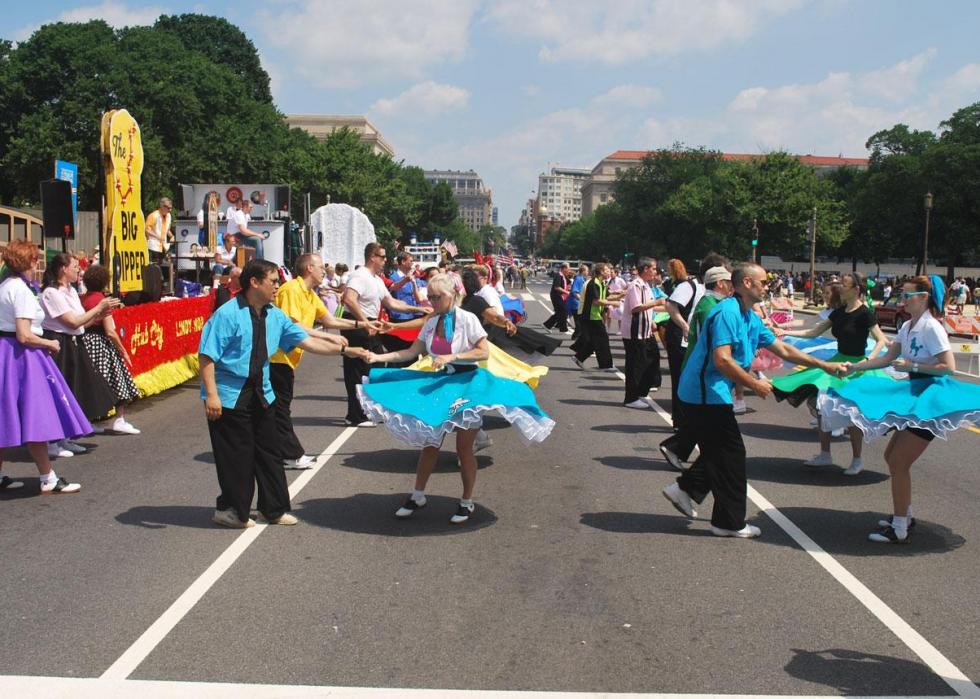
31 / 101
1950: Poodle skirts
Juli Charlot created the original prototype of a poodle skirt in 1947 afterward cut a circumvolve of felt to fit her waist and appliqueing Christmas copse to information technology. By 1950, the skirt became and so popular that she opened her own factory. Although many designs were used on the skirts, poodles were the most popular, making the skirt a truthful icon of the 1950s. Its popularity continues as a novelty retro item.
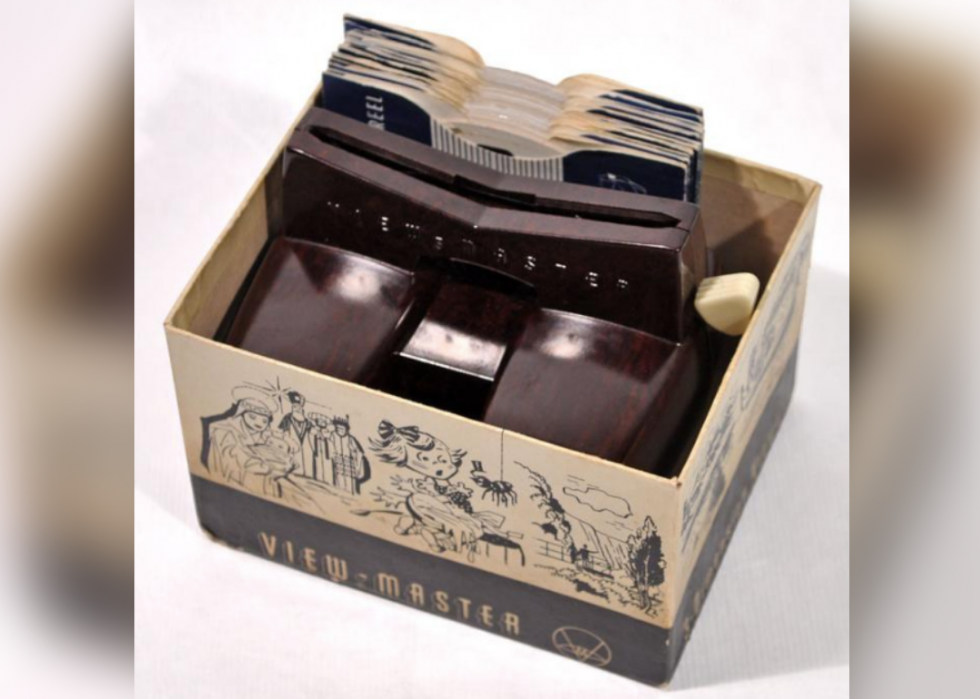
32 / 101
Museum of Hartlepool // Flickr
1951: Vintage toys
1951 saw the release of a collection of toys that became classics through the decade, including a crawling baby toy ($i.15); Hopalong Cassidy Wrist Lookout ($vii.65); the pull-along Butch the Pup toy that barked and wagged its tail (56 cents); and the Alice in Wonderland watch ($seven.65), among many others. The advent of images of Walt Disney characters besides pushed the View-Master into popularity this year.
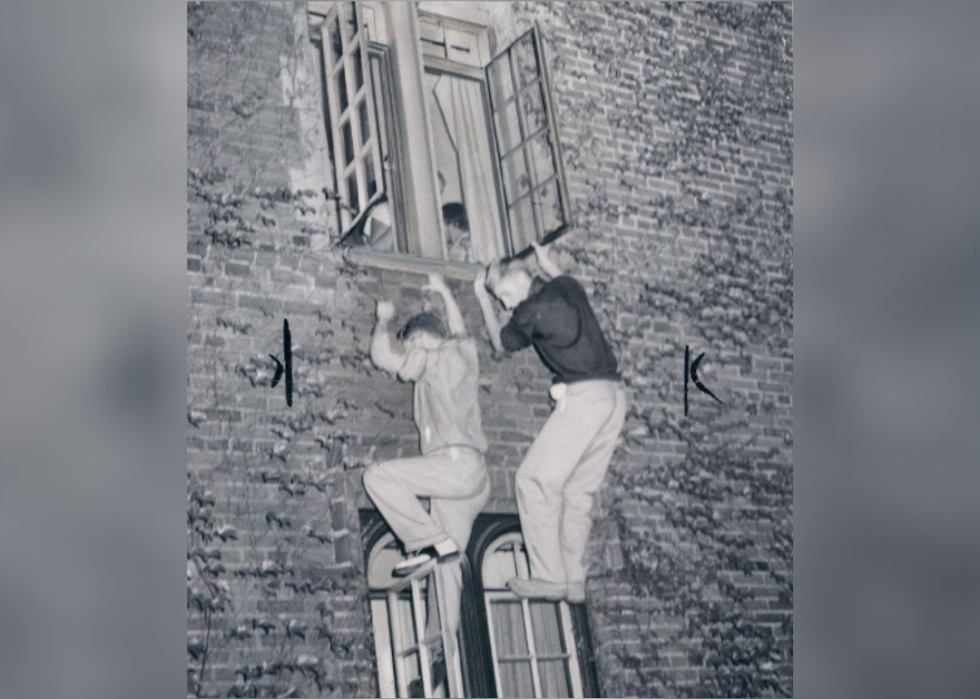
33 / 101
1952: Panty raids
Originating in 1949, panty raids took off in 1952 after a oversupply of male students at the Academy of Michigan entered several women'southward dorms and "took items of lingerie equally souvenirs." Before the year was out, the raids spread to 52 campuses across the country, with as many as iii,000 male panty raiders at the University of Texas in 1961. The fad died in the belatedly 1960s with changing attitudes, rule changes on higher campuses, and other outlets for social protest.
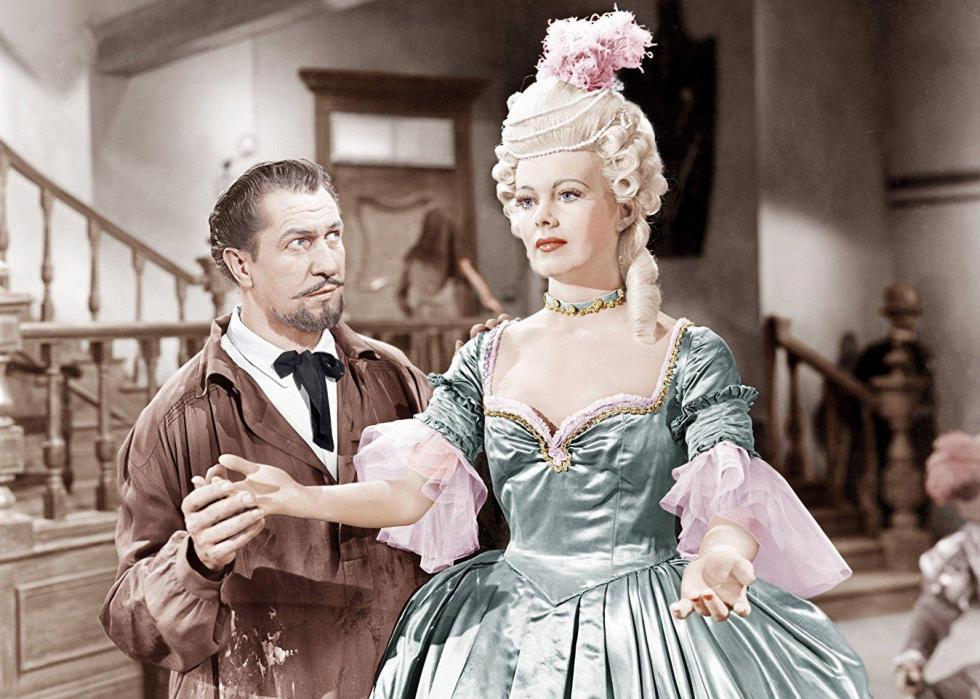
34 / 101
1953: 3D movies
Beginning with the release of "Bwana Devil" in 1952, the popularity of 3D movies spread far and broad in 1953, when in that location were more than five,000 theaters nationwide equipped to show them. The movies "House of Wax" and "It Came From Outer Space" were released in 3D this year. Moviegoers complained of eyestrain a few years afterward, but new applied science fueled a comeback with IMAX films.
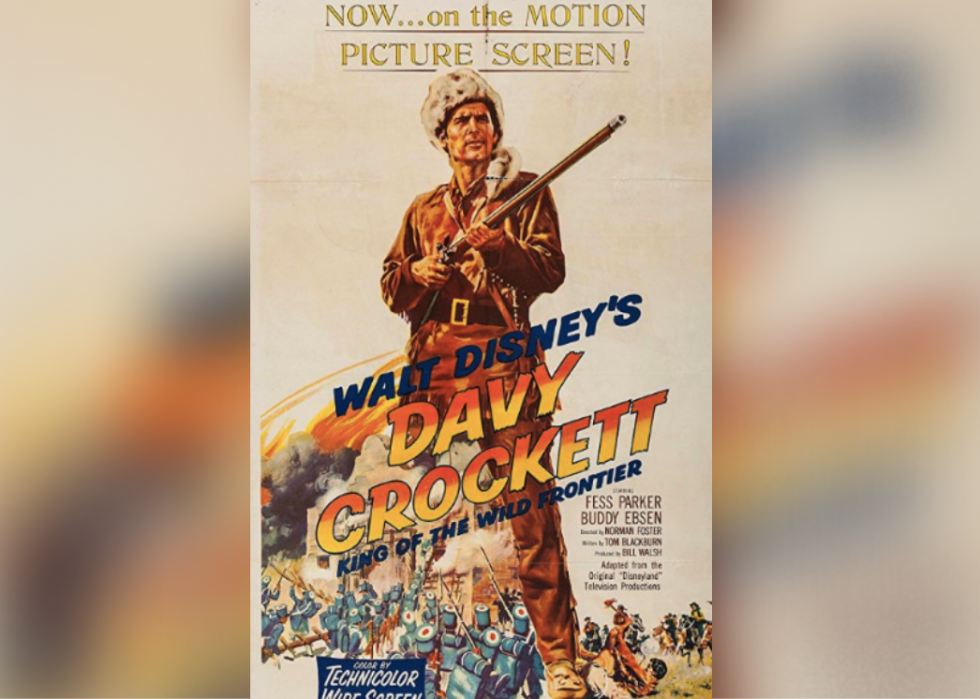
35 / 101
1954: Davy Crockett
Actor Fess Parker, starring every bit Davy Crockett, helped launch this wildly pop television receiver serial this year. Most 12 meg viewers watched each of its five installments, beginning in December. "The Ballad of Davy Crockett," the show'due south theme song, became a #ane Billboard hit in 1955. His signature coonskin cap topped The New York Times' list of must-accept toys of the decade.
Y'all may besides similar: Cultural events now available from home
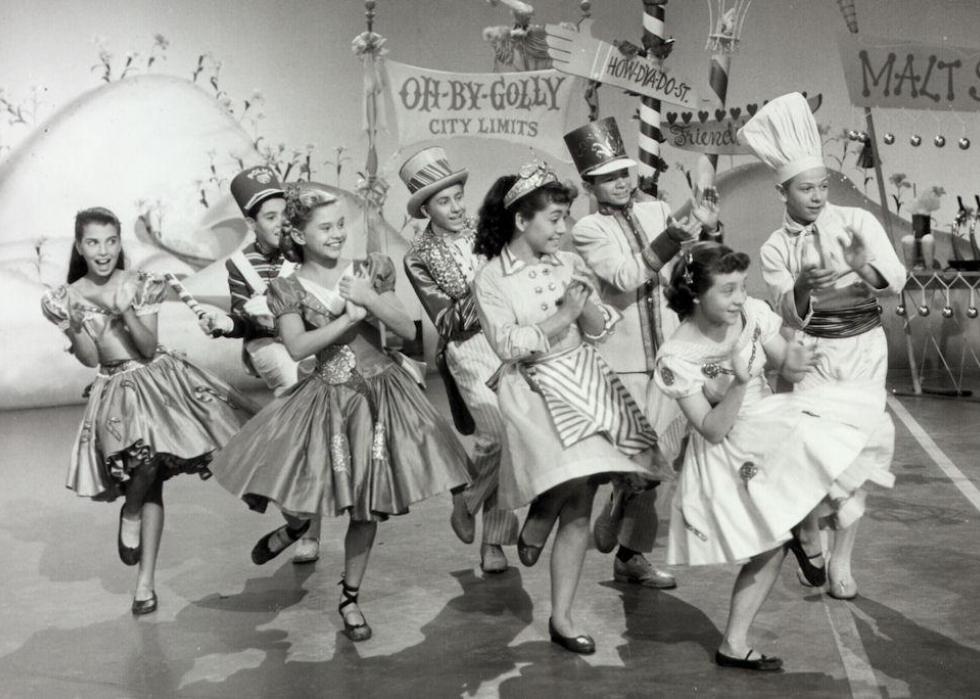
36 / 101
1955: 'Mickey Mouse Club'
1 of the 1950s' most beloved variety TV shows for kids, the "Mickey Mouse Gild" show (featuring the Mouseketeers) kicked off in 1955 on ABC, which dropped the serial just four years later in 1959. But edited reruns and evolving programming kept versions of it on the air through 1996. Afterwards cast members included Ryan Gosling, Britney Spears, Justin Timberlake, Christina Aguilera, and other household names.
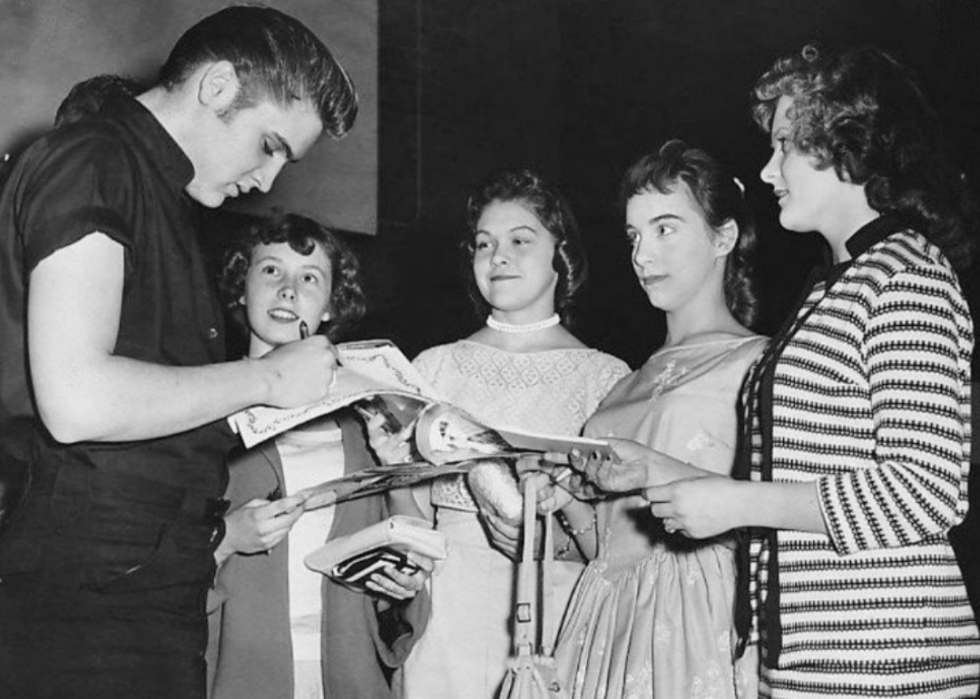
37 / 101
1956: Elvis
Still 1 of America'south all-fourth dimension favorite singers, Elvis Presley's fame skyrocketed in 1956, with his kickoff #i single, "Heartbreak Hotel" and first #1 anthology, "Elvis Presley." His fame continued to spread across America, with Television set appearances and chart-topping records, plus his first moving-picture show contract with Paramount Pictures for "Beloved Me Tender."
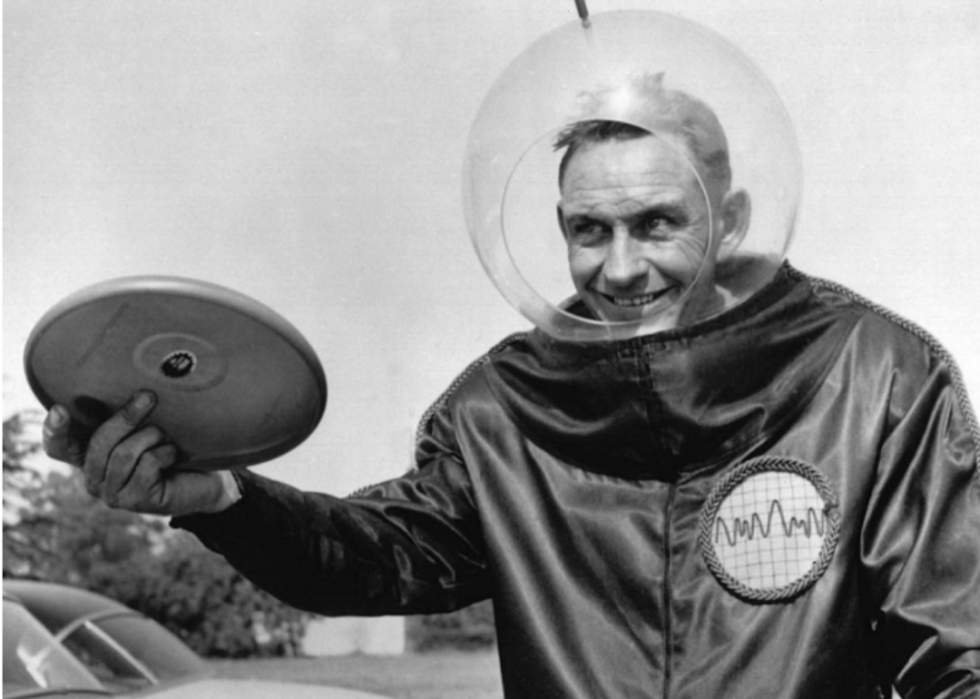
38 / 101
1957: Frisbee
Released to the public in January, Frisbees took off this year after toy company Wham-O bought the initial flying disk concept (dubbed the Pluto Platter) from inventor Walter Frederick Morrison in the tardily 1940s. Considered a fad that would soon die out, more than 100 million Frisbees take been sold so far, and sports such as Frisbee golf game have evolved to go along the hovering disc popular.
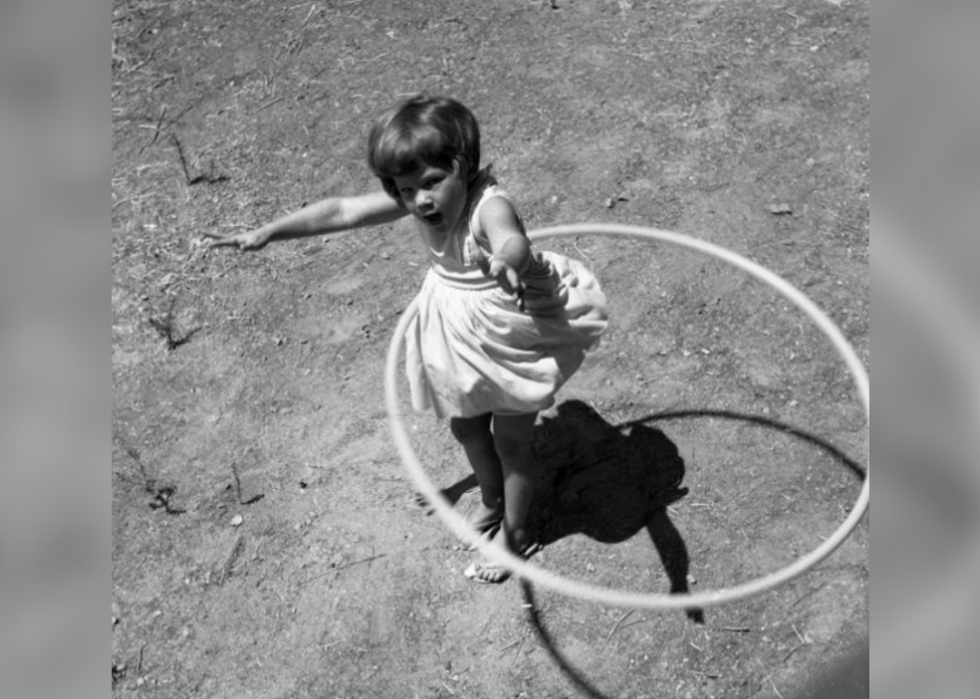
39 / 101
GeorgeLouis // Wikimedia Commons
1958: Hula hoop
Invented past Arthur K. Melin and Richard P. Knerr of the Wham-O toy company, the hula hoop was inspired by Australian wood rings. More than 100 1000000 of the multi-colored plastic hoops sold in the first yr on the market. Although the fad slowed in the 1960s, the toy is still popular, and has had resurgence equally an effective practise routine.
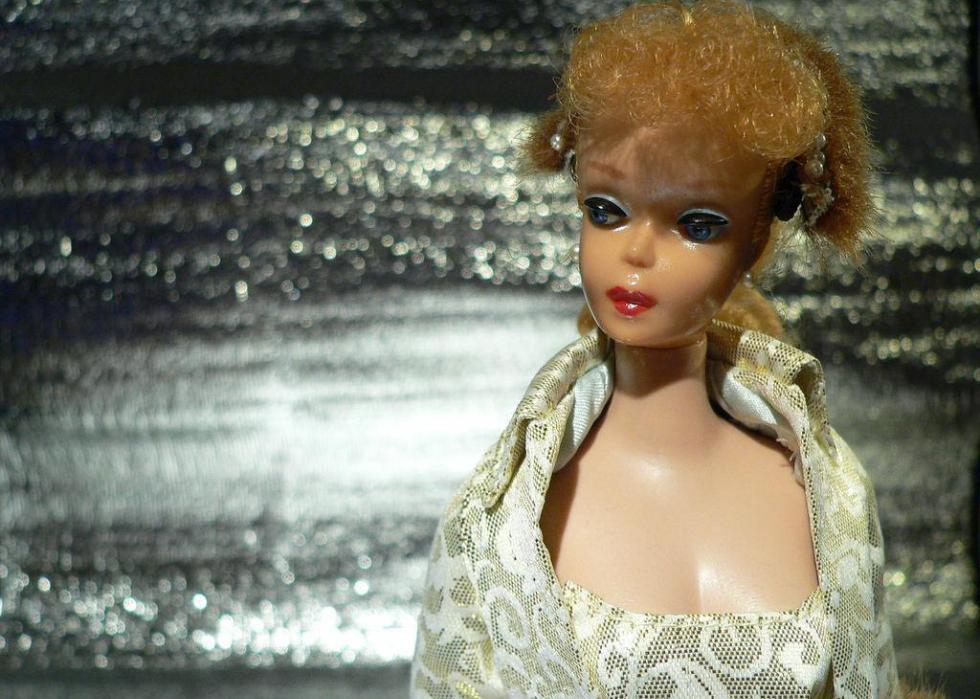
40 / 101
1961 Barbie—Julius Seelbach // Flickr
1959: Barbie

41 / 101
FORTEPAN / Erky-Nagy Tibor // Wikimedia Commons
1960: The Twist
Rock 'n Scroll singer Chubby Checker took the vocal and dance fashion "The Twist" to the tiptop after he appeared on "American Bandstand." The dance originated in the Peppermint Lounge, a New York nightclub. The dance craze gave style to new dances such as the Mashed White potato and the Watusi.

42 / 101
Joerg Moellenkamp // Flickr
1961: Fallout shelters
With America and the Soviet Spousal relationship seeming on the brink of nuclear war, President John F. Kennedy urged Americans to protect themselves by building fallout shelters. Soon, how-to books were widespread, and fallout shelters were all the rage until negotiations (détente) eased tensions and fears afterward in the decade and into the late 1970s.
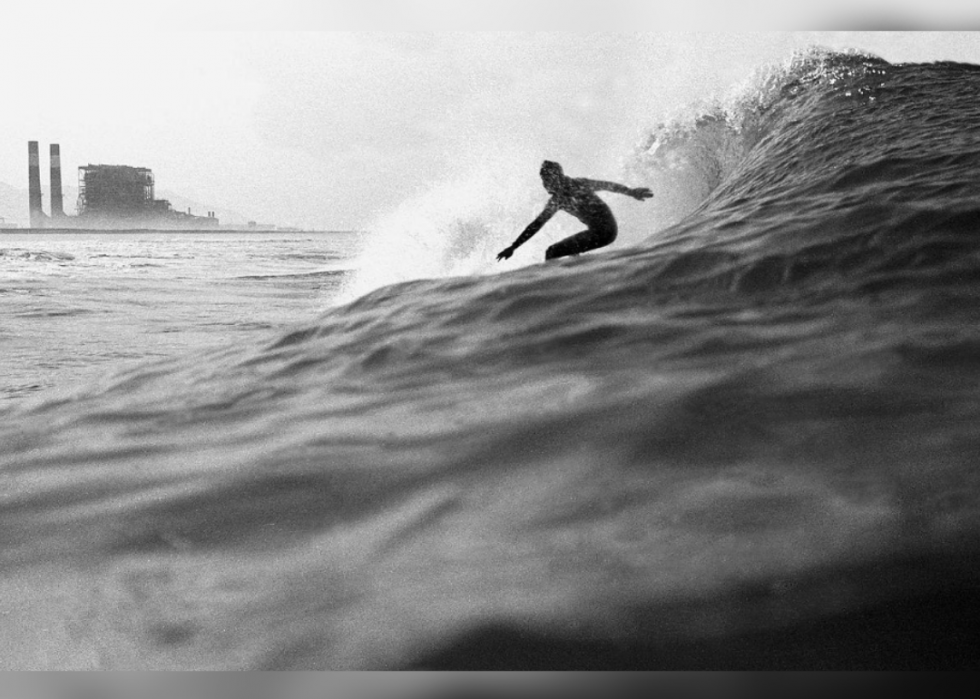
43 / 101
1962: Surfing
Popularized past the music of the Embankment Boys, Jan and Dean, Dick Dale, the Bel-Airs, and dozens more, the surfing craze was more than of a lifestyle than a fad. Epitomized in 1962 with "Surfin' Safari" by the Embankment Boys and catapulted into popularity with numerous movies, the sport is even so pop with many.
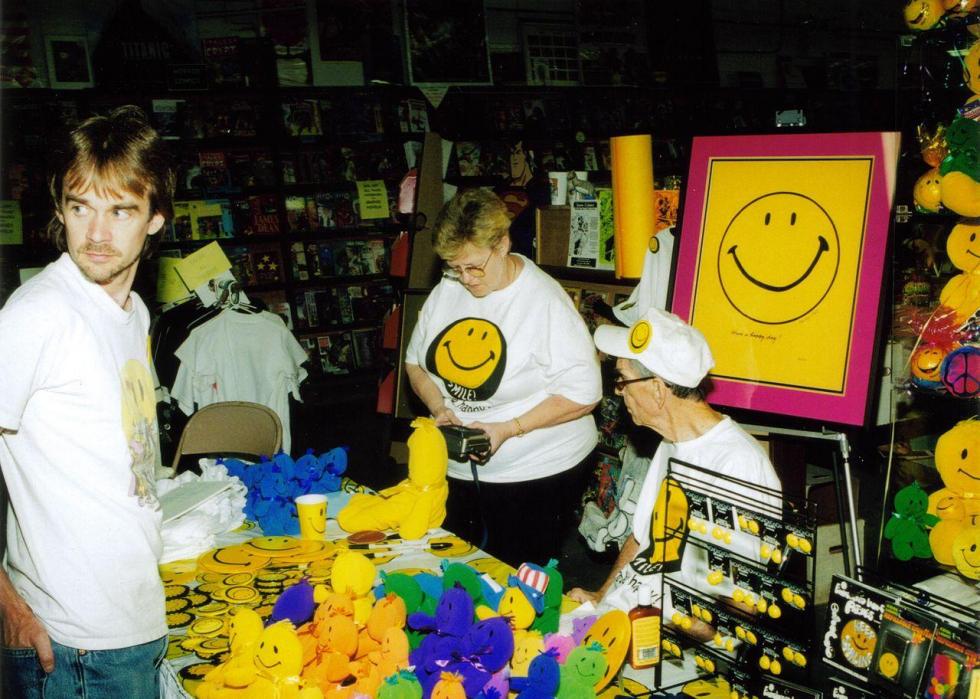
44 / 101
1963: Smiley faces
In an era long earlier emoji, smiley faces were created in 1963 by graphic artist and advertising pro H.R. Ball—a customer was seeking a way to enhance morale amongst insurance company employees. He never copyrighted the image, which was appropriated in 1971 by the Spain brothers. Many others have taken claim for the icon, which makes more than $100 million a year for the Smiley Company and was even used past Walmart for a time.
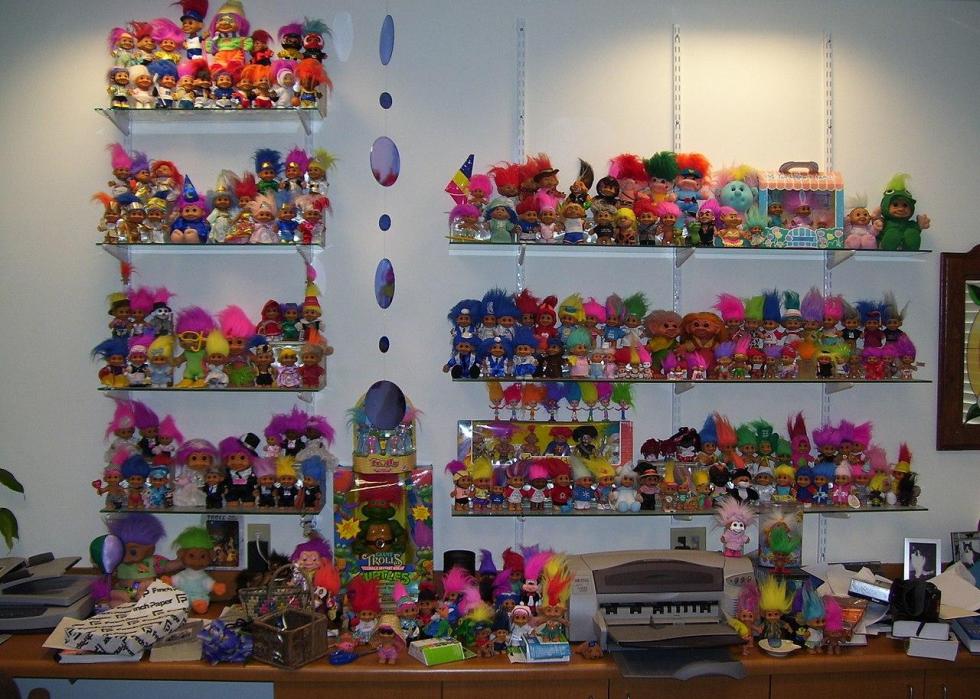
45 / 101
1964: Troll dolls
The Danish inventor of Troll dolls, Thomas Dam, originally created these longhaired, broad-eyed creatures (one time known equally Dam Dolls) for his girl in 1959. It became an American toy craze in 1964 and became popular again in the 1990s. Like many pop toys, knockoffs ran rampant—but the Dam family prevailed in a copyright boxing in 2003.
You may also similar: Exercise you know your state nicknames?

46 / 101
Twins of Sedona // Wikimedia Commons
1965: Go-go boots
Created in 1964 by Andre Courreges, go-become boots became popular the following year as the get-to style accessory for women from Los Angeles to New York. Nancy Sinatra's hit "These Boots Are Made for Walkin'" further boosted the entreatment of these dogie-level shoes. But mode changes with shorter skirts and higher boots pushed this one out of the mainstream earlier yr's end.
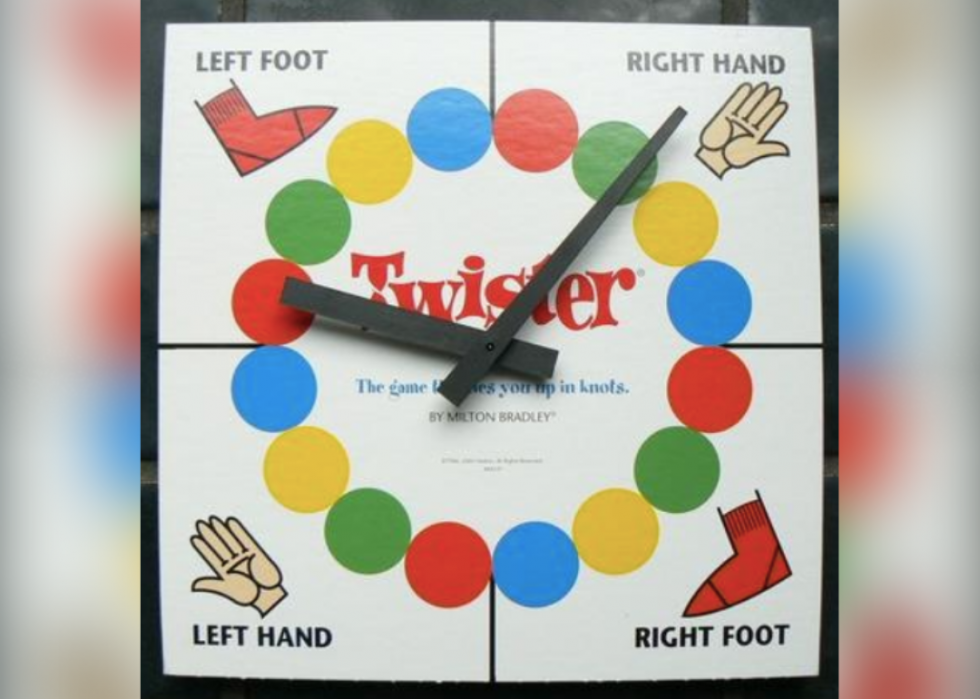
47 / 101
B****Buzz // Wikimedia Commons
1966: Twister
In the Twister party game, 4 players have to impact colored spots with easily or feet only, on a flooring mat. Every bit colors are called out, the players have to twist to maneuver to new spots without falling. The game became an overnight hit when Johnny Carson played it with Eva Gabor, and it made it to the National Toy Hall of Fame.
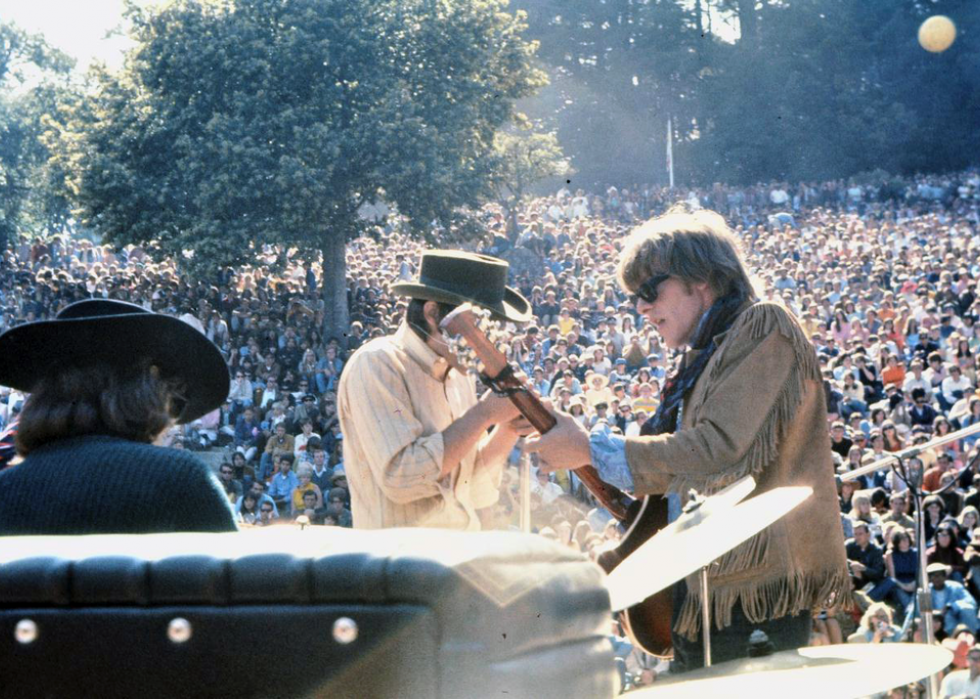
48 / 101
Bryan Costales // Wikimedia Commons
1967: Hippies and the Summertime of Love
The then-called Human Be-In in San Francisco popularized hippie culture across the nation this twelvemonth, as thirty,000 flower children gathered in Golden Gate Park, and the Monterey Pop Festival in June brought the rock music of this counterculture to a broad audition and kicked off the Summer of Love. Time Magazine wrote of the hippie subculture in July. In October, the hippie move was declared dead in a symbolic parade and funeral.

49 / 101
1968: Jacuzzi hot tubs
Named for inventor Roy Jacuzzi, the world's offset integrated whirlpool bath was released this twelvemonth, leading to an indoor-outdoor hot tub craze that peaked in the belatedly 1970s, when 400,000 were sold in i yr in California. Although later this fad included in new-dwelling construction, whirlpool baths in new homes are now on a major turn down.
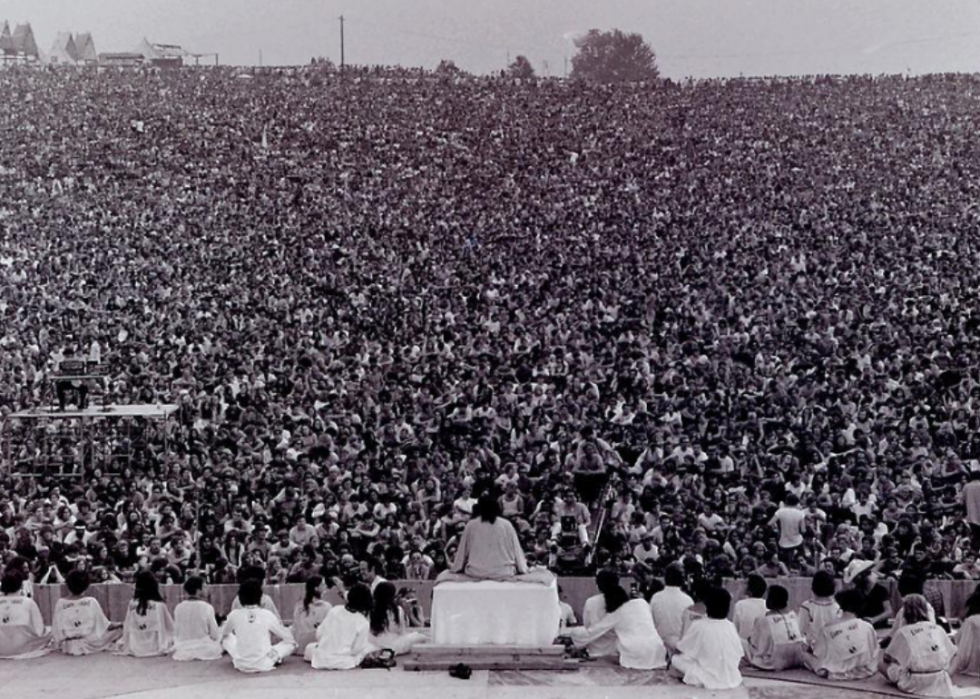
50 / 101
1969: Woodstock music festival
Billed as "three days of peace and music," the Woodstock music festival featured more 30 rock bands and was attended by more than 400,000 in upstate New York. The effect is widely regarded equally a key turning indicate in popular music history and the counterculture motility of the times.
You may also like: What the world was like when your grandparents were built-in
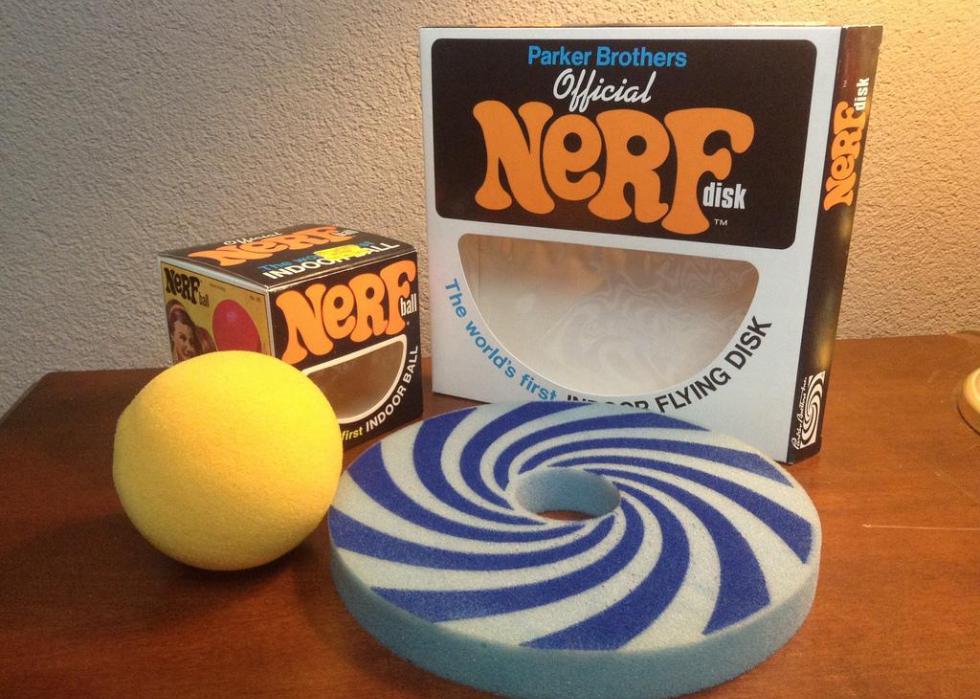
51 / 101
1970: The Nerf ball
Billed as the earth'southward starting time—and safest—foam ball, the Nerf Ball sold 4 meg units in its get-go year. Its popularity continued as new toys such equally Nerf guns and darts continued to hit the market place and remain popular today.

52 / 101
1971: Acupuncture
President Richard Nixon visited Prc in 1971, returning with a new appreciation of Chinese philosophies and cures—including acupuncture. Considered by some to be healing magic, acupuncture helps reduce hurting and the effects of injury or affliction due to an imbalance in the trunk's energy, or "chi." The mainstream medical customs sought to ignominy it, but its practice is becoming even more popular today.
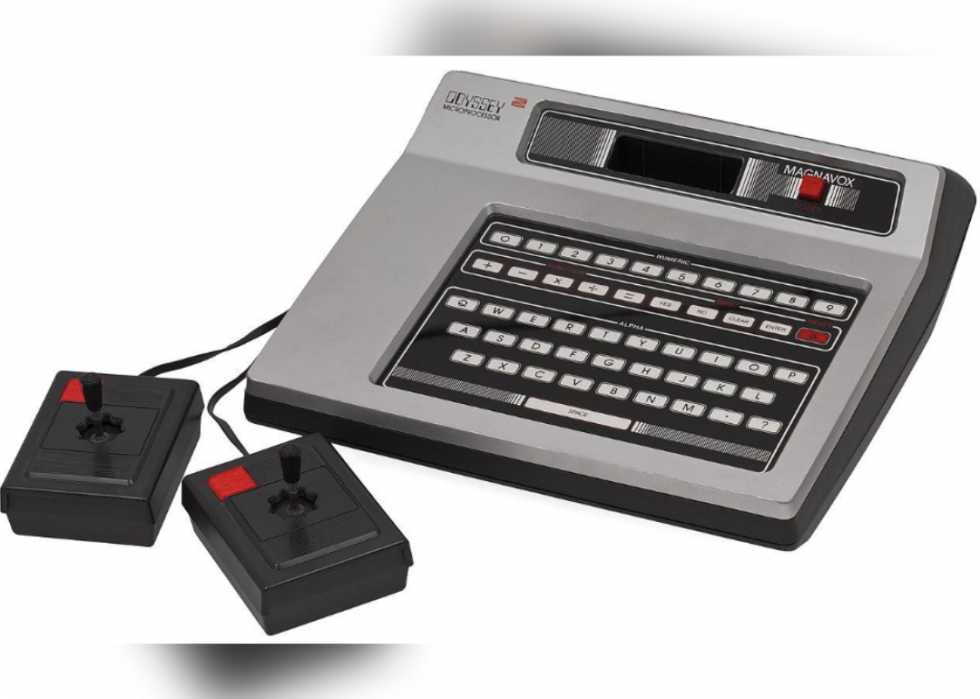
53 / 101
Evan-Amos // Wikimedia Commons
1972: Video games
Video games got their popular start in 1972 with the introduction of the Odyssey—the first video game home panel—which inspired Atari'southward Pong, the first arcade video game (released later that year). With numerous advances in technology, video games are now a $100 billion global manufacture.

54 / 101
1973: Streaking
Another higher campus fad, streaking involved immature people running through public places naked. Starting at Memphis State Academy, it quickly spread to other college campuses especially in the Los Angeles area, with nearly 1,500 performing a mass streak at the University of Georgia. Information technology spread throughout the nation until fading at the end of the 1970s.
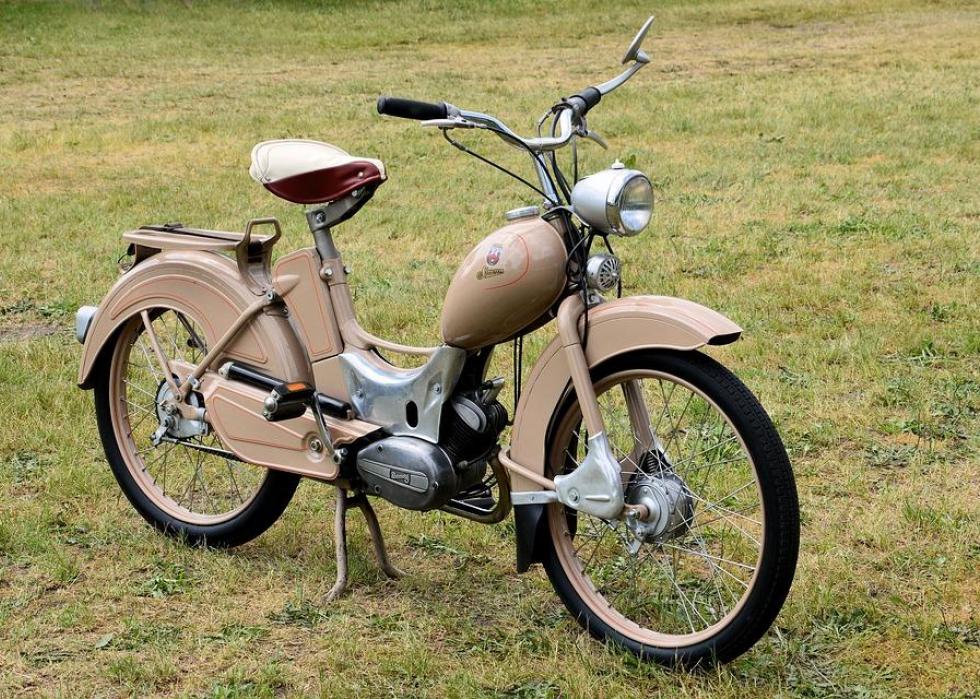
55 / 101
1974: Mopeds
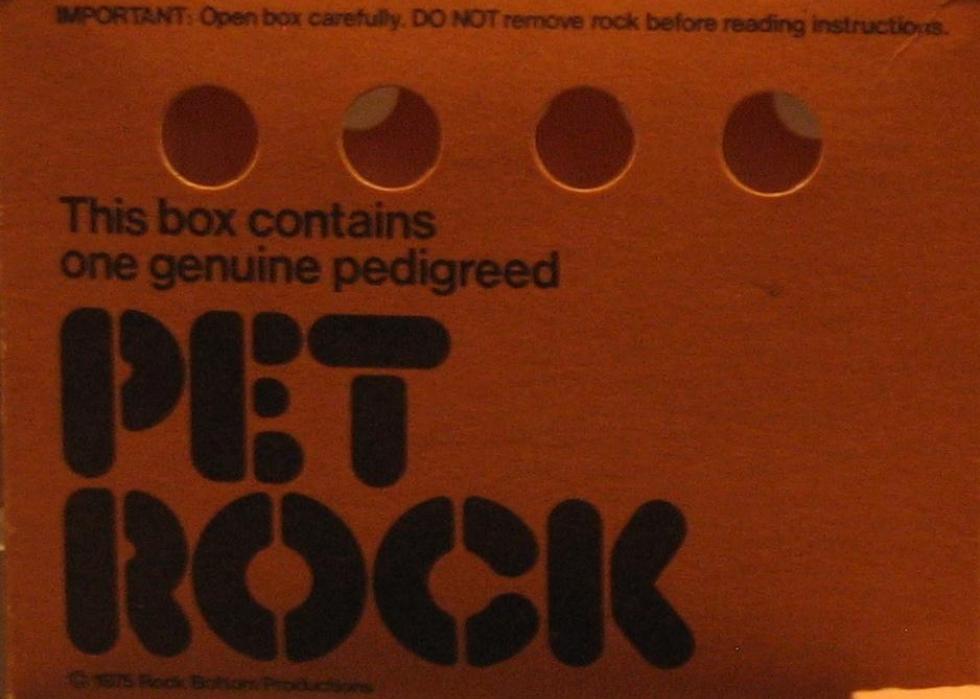
56 / 101
1975: Pet rocks
Conceived by Gary Dahl, pet rocks came complete with a 32-page grooming manual on how to care for your pet rock. About 1.5 million of the collectibles sold at $4 each. The fad died off in 1976 due to low sales.
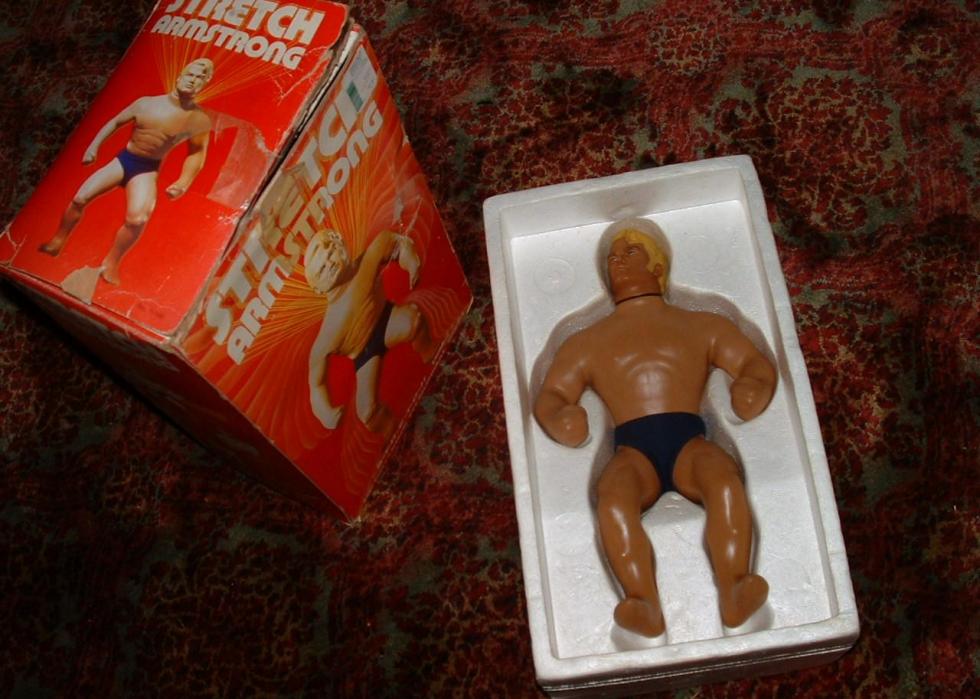
57 / 101
Alex Beattie // Wikimedia Commons
1976: Stretch Armstrong
One of the virtually popular toys of the year, Stretch Armstrong was a big, muscular action figure that owed its stretchiness to corn syrup. Marketed from 1976 to 1980, his popularity went global, with 67 different versions including popular superhero and other figures. Stretch even went on to star in movies and a Telly series. His popularity leveled off but gained boosted traction by making the Must-Take Toys List in 2017.
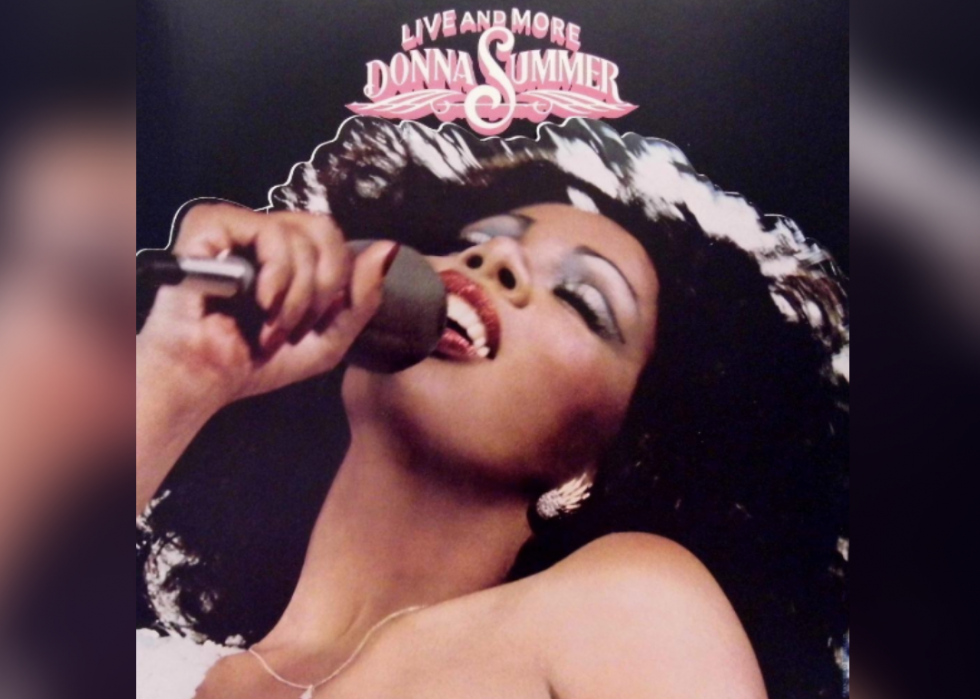
58 / 101
1977: Disco
Built-in on Valentine'southward Day in 1970, Disco kicked off when David Mancuso opened The Loft nightclub in New York Urban center. This new brood of dance music peaked with artists like KC and the Sunshine Band, Donna Summer, and scores of others, and rocketed in popularity after the pic "Sabbatum Dark Fever" in 1977. The number of discos soared from one,500 to 45,000, but the fad died down by 1980.
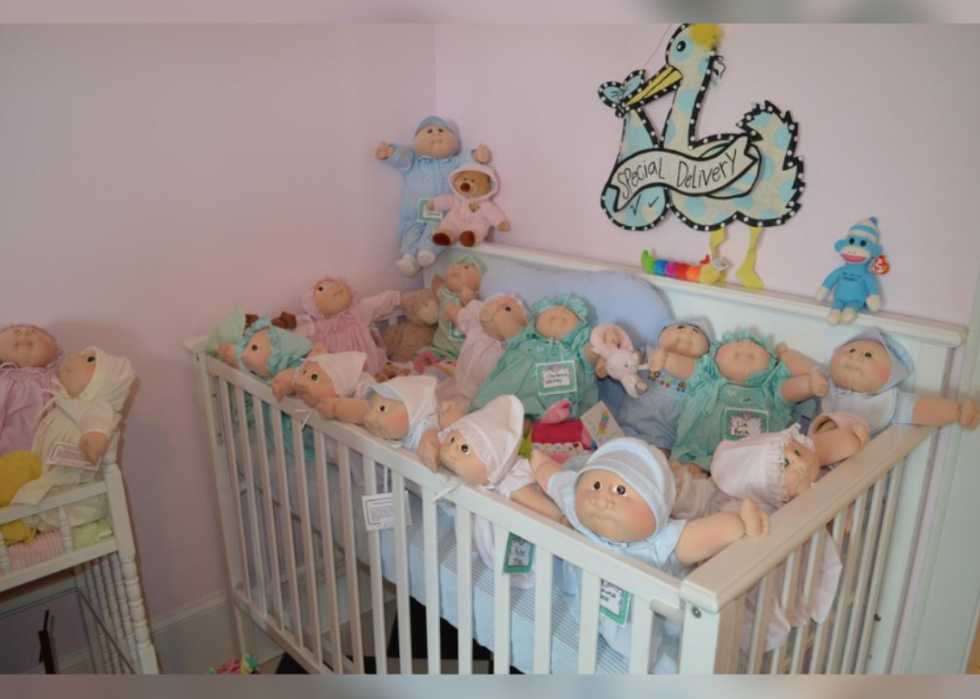
59 / 101
William McKeehan // Flickr
1978: Cabbage Patch Kids
Created in 1978, Cabbage Patch Kids came with their own names and nativity certificates, and went on to become i of the most popular toy fads of the 1980s. Their popularity lessened by the end of the decade, but they were successfully re-released in 2004.
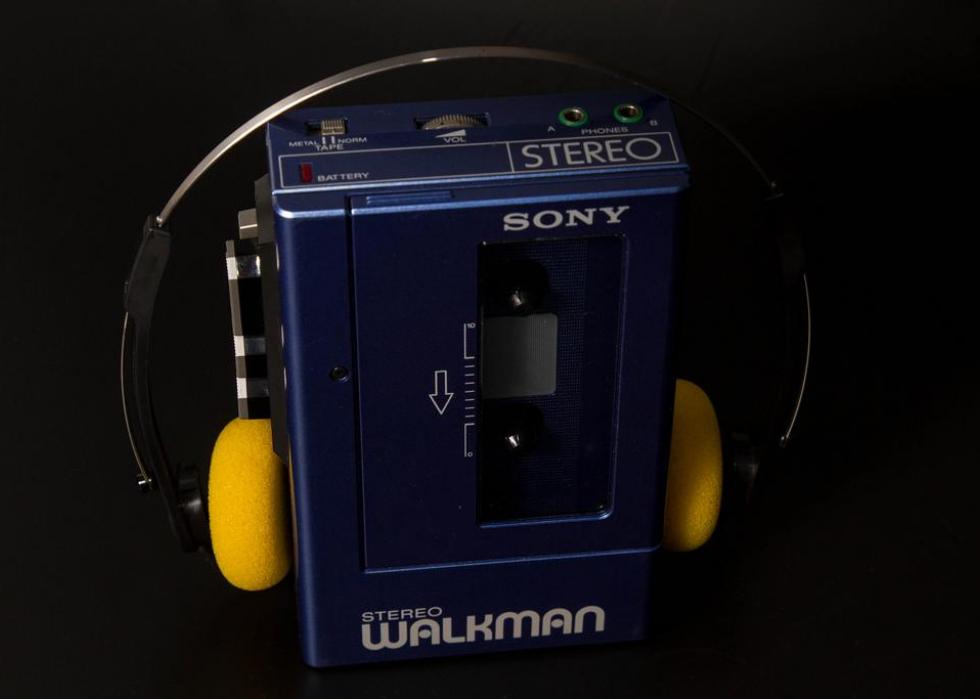
60 / 101
1979: Walkmen
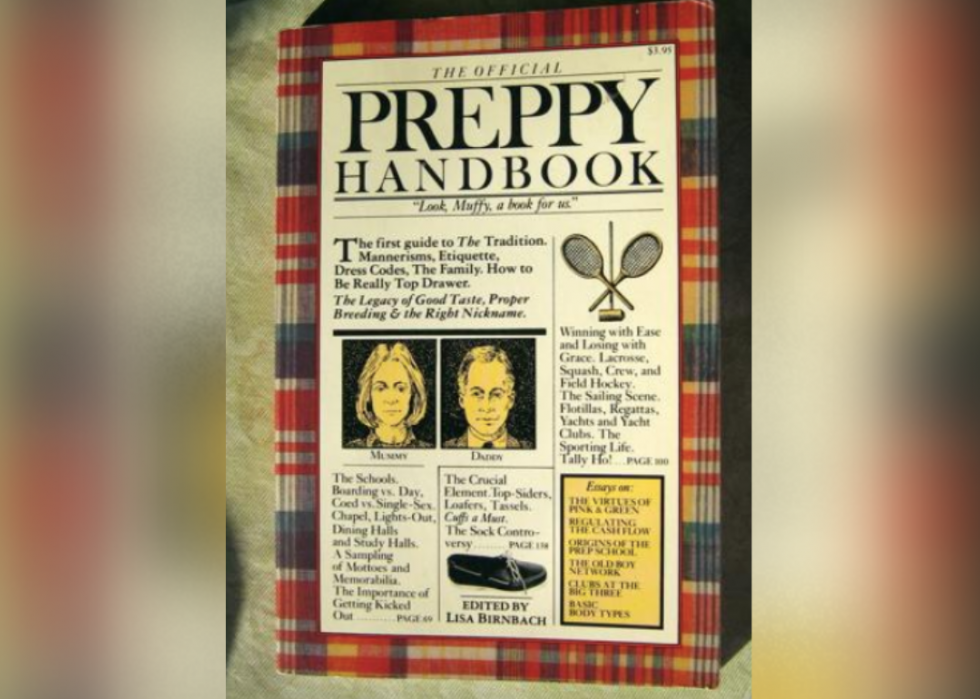
61 / 101
smittenkittenorig // Flickr
1980: Preppies
Written past Ivy Leaguers in 1980, the humorous "Official Preppy Handbook" popularized wealthy New England styles for prep schoolhouse and academy life, such as layered twin polo shirts, khaki pants, and ribbon belts. Loftier-end retailers like Brooks Brothers, Ralph Lauren, and Lacoste became synonymous with the tendency, which often featured tennis and sailing motifs. Fifty-fifty though the initial fervor died down, sure elements remain fashion staples.
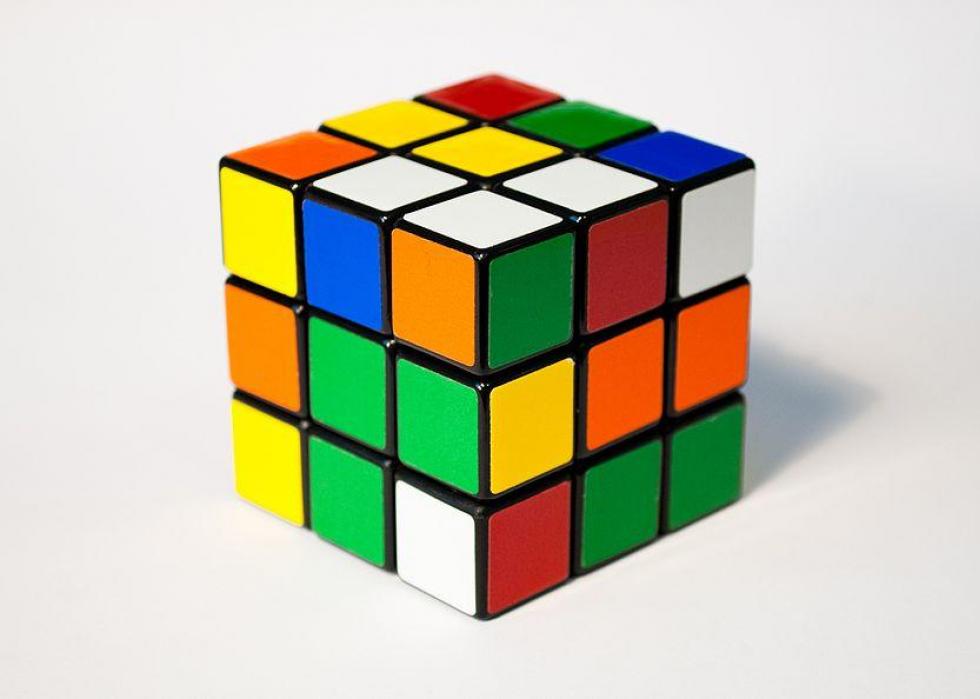
62 / 101
Acdx // Wikimedia Eatables
1981: Rubik's Cube
Released in 1980, Rubik's Cube, a 3D combination puzzle, became an international craze in 1981. In its beginning three years, it sold 100 1000000 units. It continued to sell through the 1990s, and aside from a dip in interest around the early on 2000s, involvement somewhen renewed and it became ane of the best-selling toys of all time.
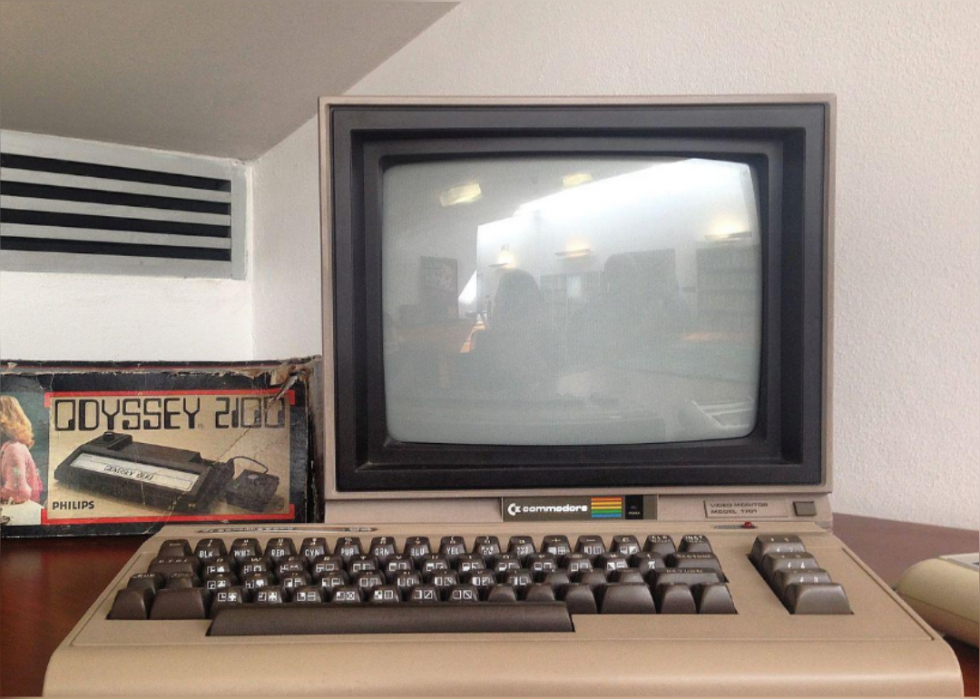
63 / 101
Francesca Ussani (WMIT) // Wikimedia Commons
1982: The Commodore 64
Now a mainstay in just about everyone's hands, computers reached major breakthroughs in 1982 with the release of the Commodore 64 reckoner. The C64 holds the Guinness World Record as the highest-selling single computer of all time, with about 17 1000000 sold. Information technology was discontinued in 1994.
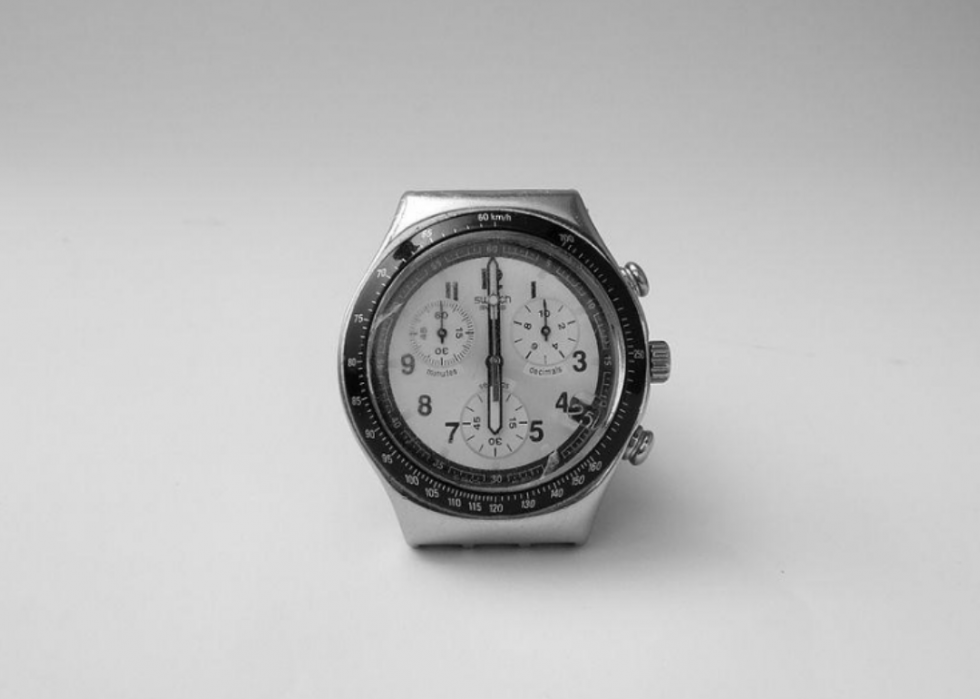
64 / 101
Booksworm // Wikimedia Commons
1983: Swatches
Released in its dwelling house country of Switzerland in 1983, Swatch watches (too known as Swatches) sold a million pieces that yr. Made of plastic and cheaper to make than standard watches, Swatches took off internationally before long subsequently, with millions sold in various colors and styles. Competitor watches led to its demise as a fad.
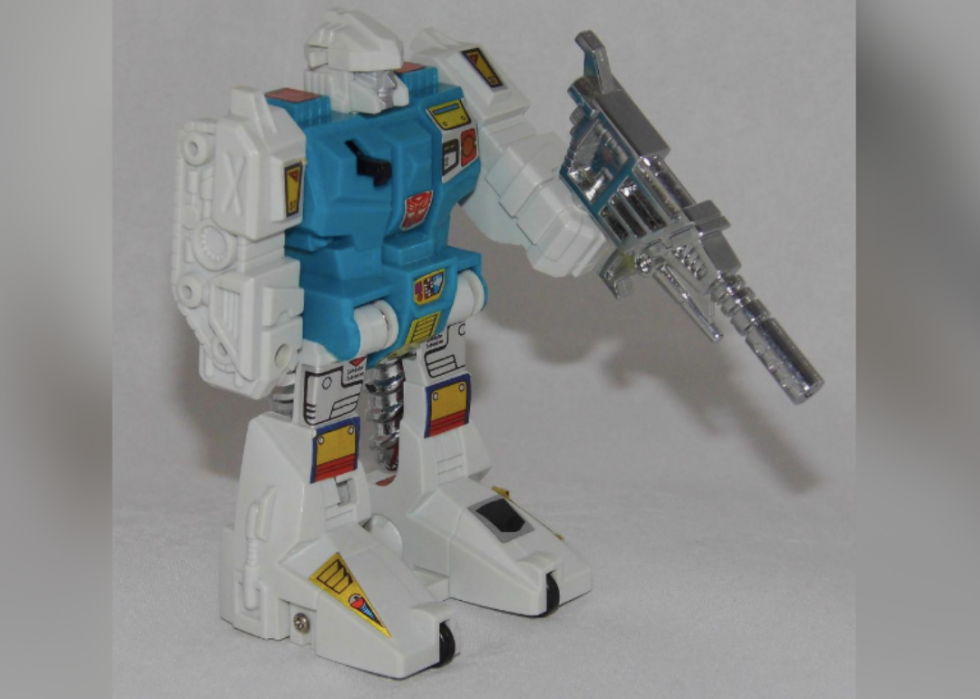
65 / 101
1984: Transformers
Transformers, which are movable toys that inverse from diverse vehicles and electronics into robotic fighting machines, made huge waves in the toy industry in 1984. Information technology all started 1974 with the "Microman" prototype, and in post-obit years, a roster of action figure characters soon made their way into a boom including comic books, cartoons, and other trade. Their popularity remains, cheers in part to the movie franchise that began in 2007.
You may also like: Popular fashion trends the twelvemonth you were born
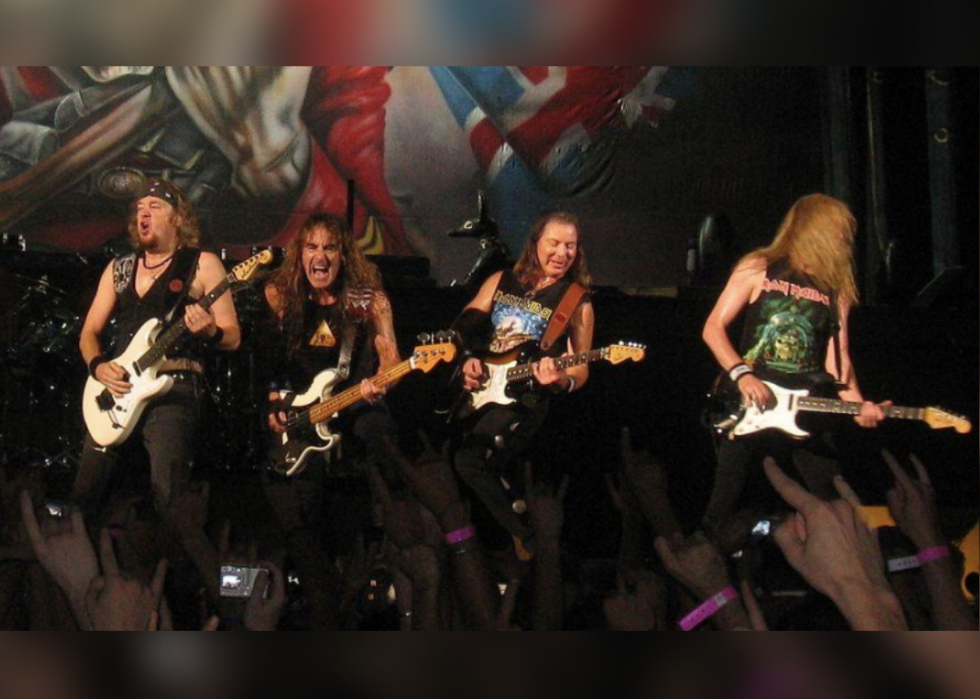
66 / 101
Metalheart // Wikimedia Commons
1985: Long-haired metal bands
Long-haired, heavy metallic rock bands gained a resurgence starting around 1985 in the wake of their 1970s predecessors. Ranging from fast-paced thrash metal bands such every bit Iron Maiden, Megadeth, Metallica, and Motorhead, to glammed-upwardly acts like Poison and Mötley Crüe, were all the rage. The craze began to nosedive around 1988, making way for grittier acts like Guns North' Roses and the emerging grunge scene.
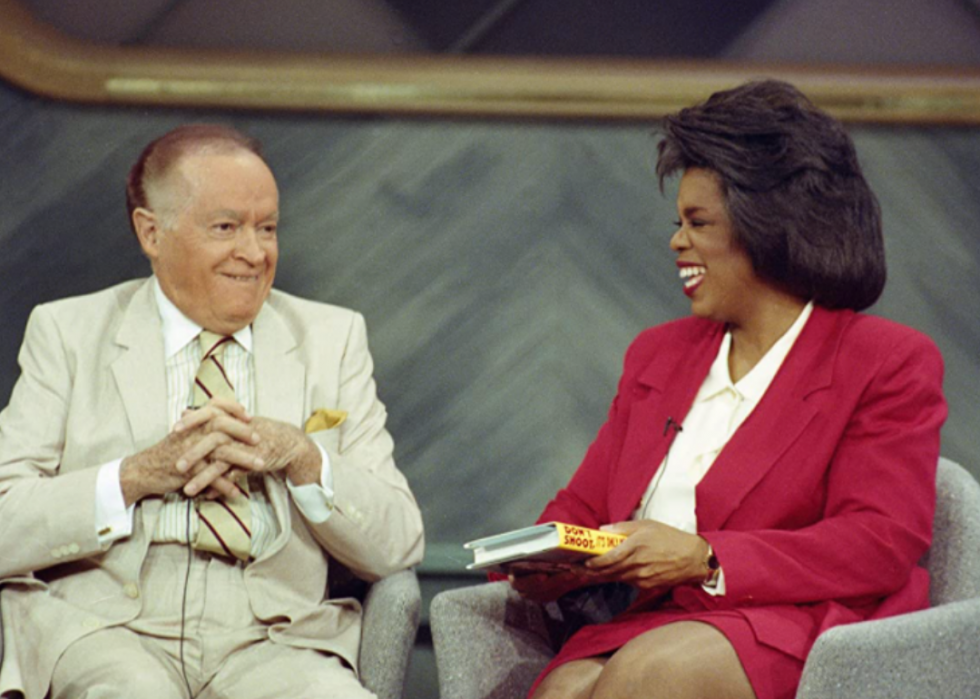
67 / 101
1986: 'The Oprah Winfrey Show'
Starting with a half-hour talk show in Chicago in 1983, Oprah Winfrey was convinced to sign a TV syndication bargain, going live for 60 minutes-long episodes this twelvemonth and crushing the competition with "The Oprah Winfrey Prove." Although the prove's run ended in 2011, Oprah remains a household name and one of the most influential women in America. Winfrey now has her own Telly channel: the Oprah Winfrey Network (Own), which debuted in 2011.
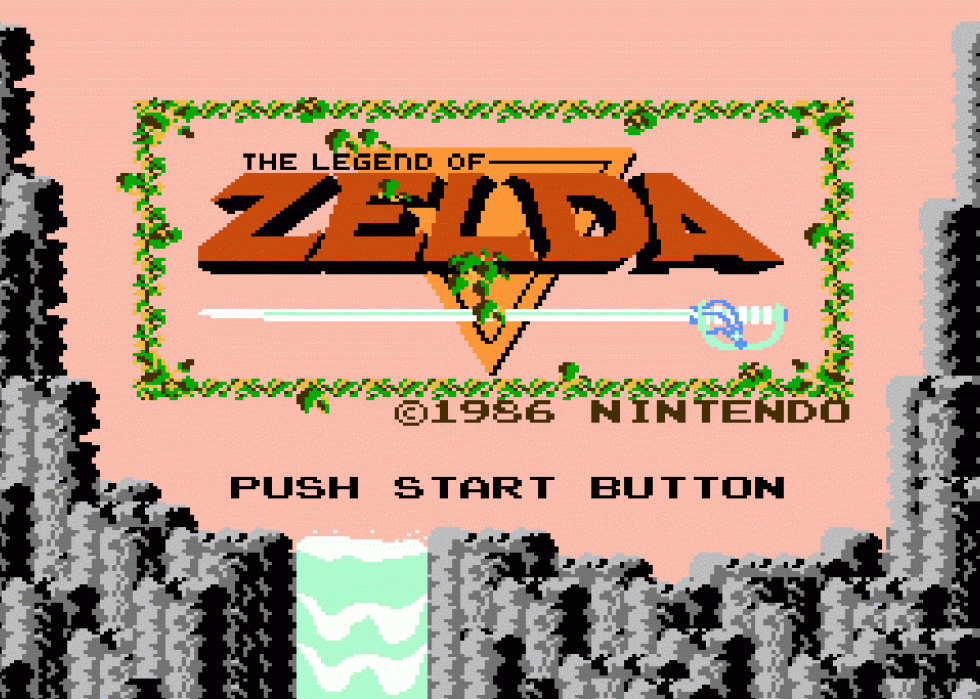
68 / 101
Ali Mohammed // Wikimedia Eatables
1987: 'The Legend of Zelda'
One of the well-nigh popular Nintendo video games, "The Legend of Zelda," an action-hazard video-game series, kicked off in the U.South. this twelvemonth later on success in Japan a year earlier. Since and so, 19 sequels take been introduced, with more than seventy 1000000 copies sold: It continues to evolve.
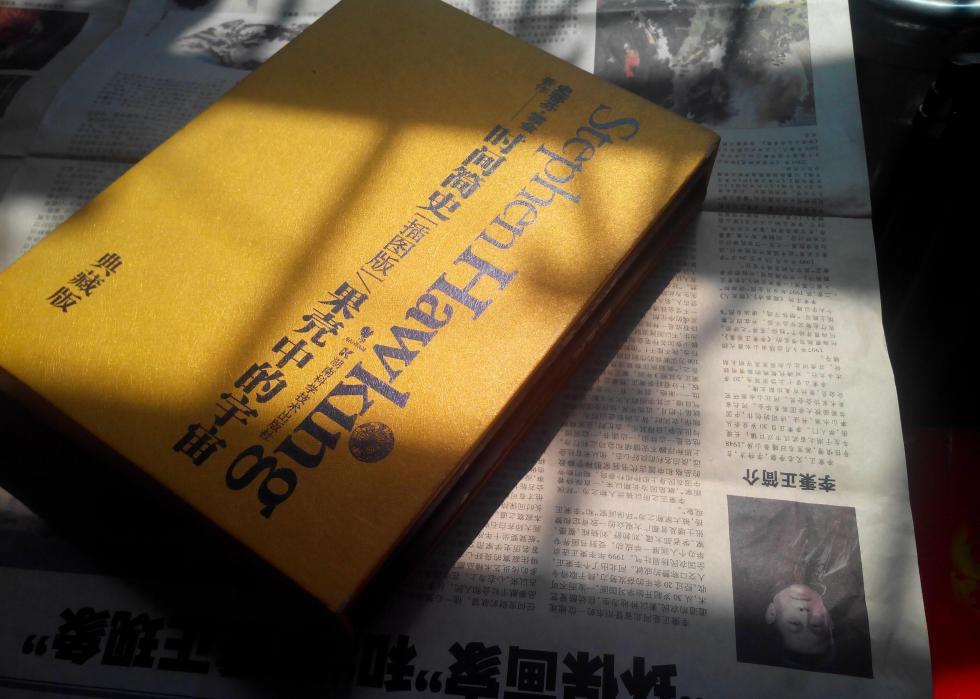
69 / 101
1988: 'A Brief History of Time'
The belatedly physicist Stephen Hawking released the best-seller "A Brief History of Time" in September. Using understandable linguistic communication, his book looks at the great questions of our universe, as the subtitle says, "from the Big Blindside to black holes." The volume went on to sell more than ten meg copies.
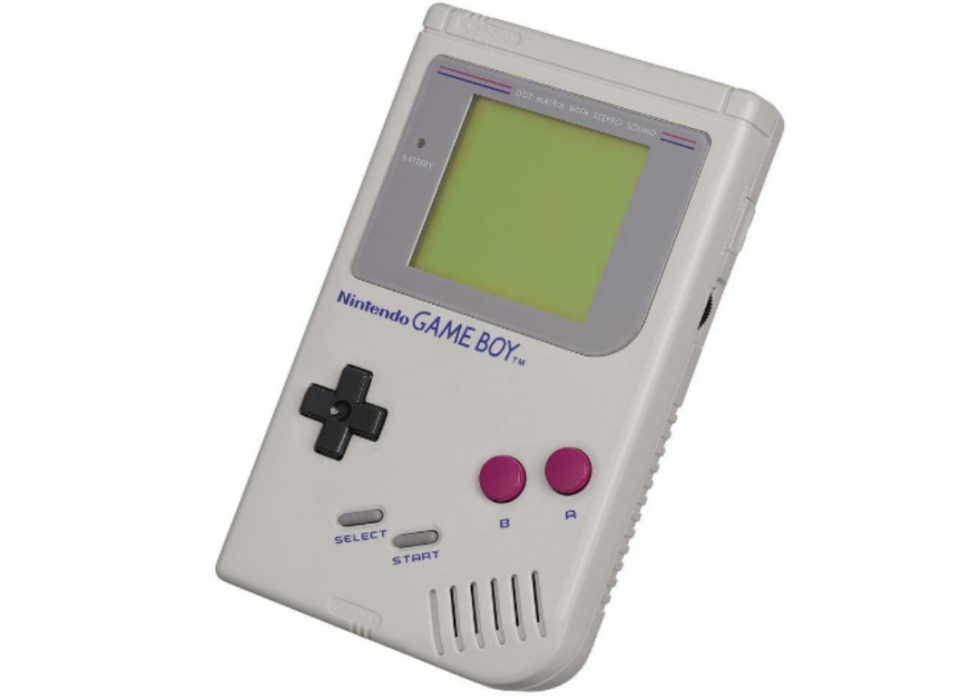
70 / 101
Evan-Amos // Wikimedia Commons
1989: Game Boy
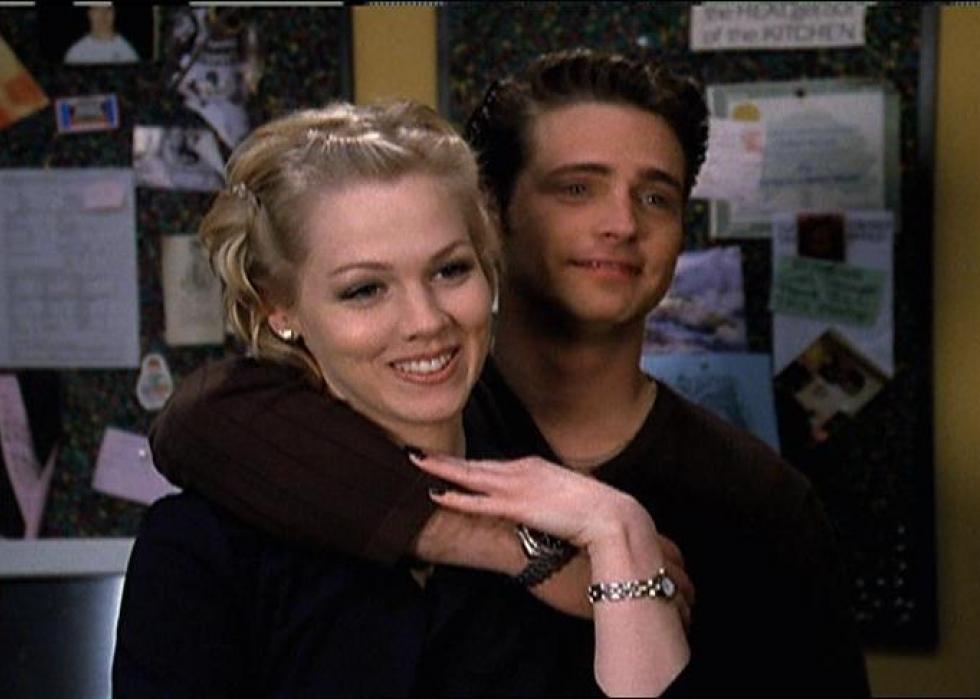
71 / 101
1990: 'Beverly Hills 90210'
A soap opera depicting affluent teens at an upscale California high school, "Beverly Hills 90210" kicked off this twelvemonth and ran for 10 years as a pop teenage TV fad. Roofing problems such every bit drug use, self-impairment among teens, and ballgame, the program started off slowly before taking off the post-obit year, when it became one of Fox'south summit shows. Dolls, books, fashions, and fan clubs followed; the series was rebooted every bit "90210" in 2008 on the CW.
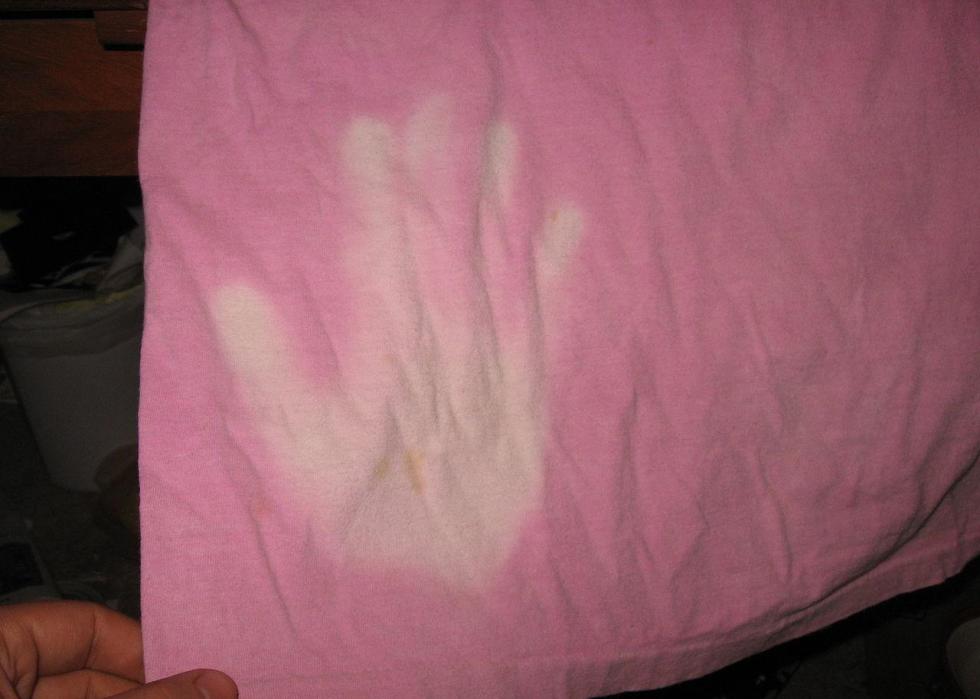
72 / 101
Piercetheorganist // Wikimedia Commons
1991: Hypercolor sportswear
Pop with middle- and high-school youngsters, Hypercolor T-shirts, shorts, pants, sweatshirts, and other article of clothing were touchable, heat-sensitive outerwear that inverse color with the heat of the torso wearing them, or the hands touching them. Originally fabricated in the late 1980s by Generra, the fad took off in 1991, with the company selling $50 million between February and May. The company—and its concept—went bankrupt a year later on.
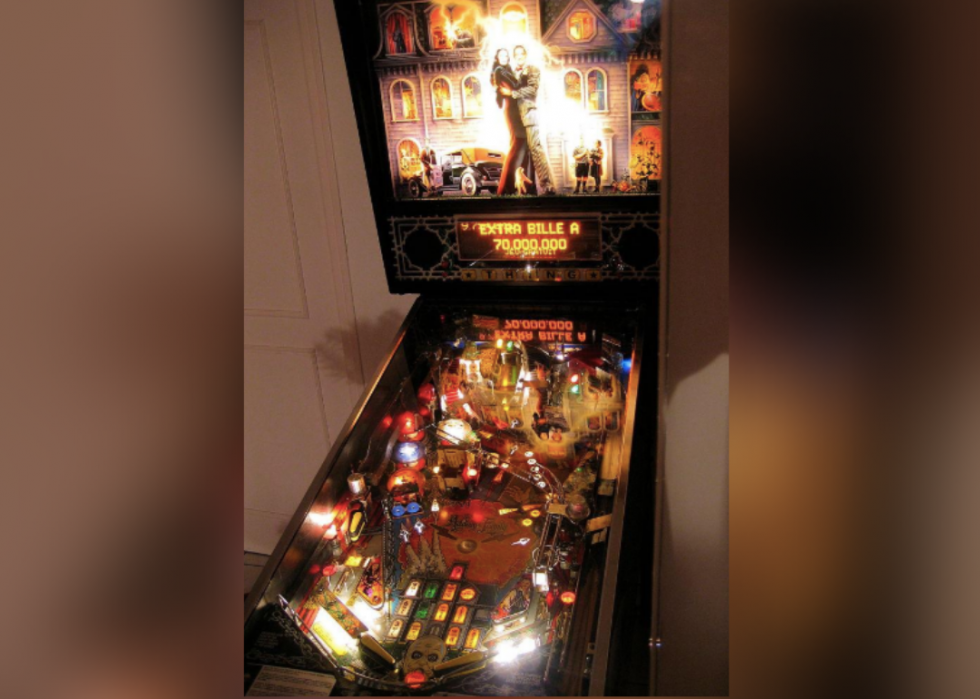
73 / 101
Stéfan Le Dû // Wikimedia Eatables
1992: 'The Addams Family' pinball machine
Officially the best-selling pinball automobile of all time, "The Addams Family" pinball automobile was released this year, based on the 1991 hitting movie of the same name (which was inspired by the archetype Telly show). More than twenty,000 machines take been sold and so far, and its popularity stems primarily from a huge number of scoring modes and dialogue recorded past the moving-picture show's stars.
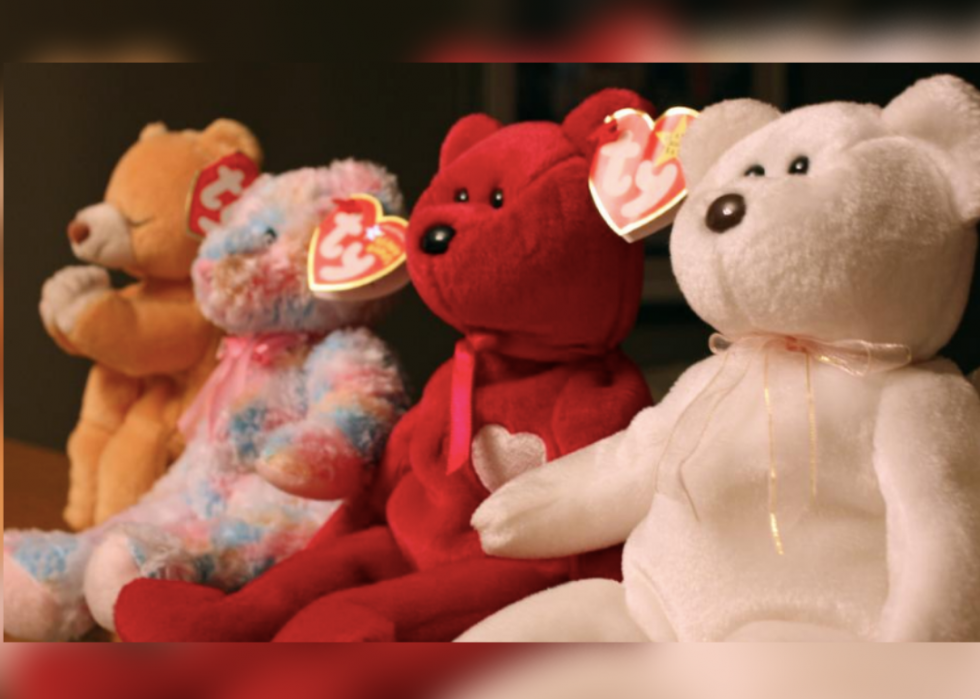
74 / 101
Dominique Godbout // Flickr
1993: Beanie Babies
Ty Inc. introduced a line of small bean handbag animals called Beanie Babies in 1993. Soon what started as a few types of critters evolved into a line of hundreds equally the demand increased. The visitor stopped product in 1999, and the brand has become a punchline due to the Babies' market place saturation and overhyped resale value.
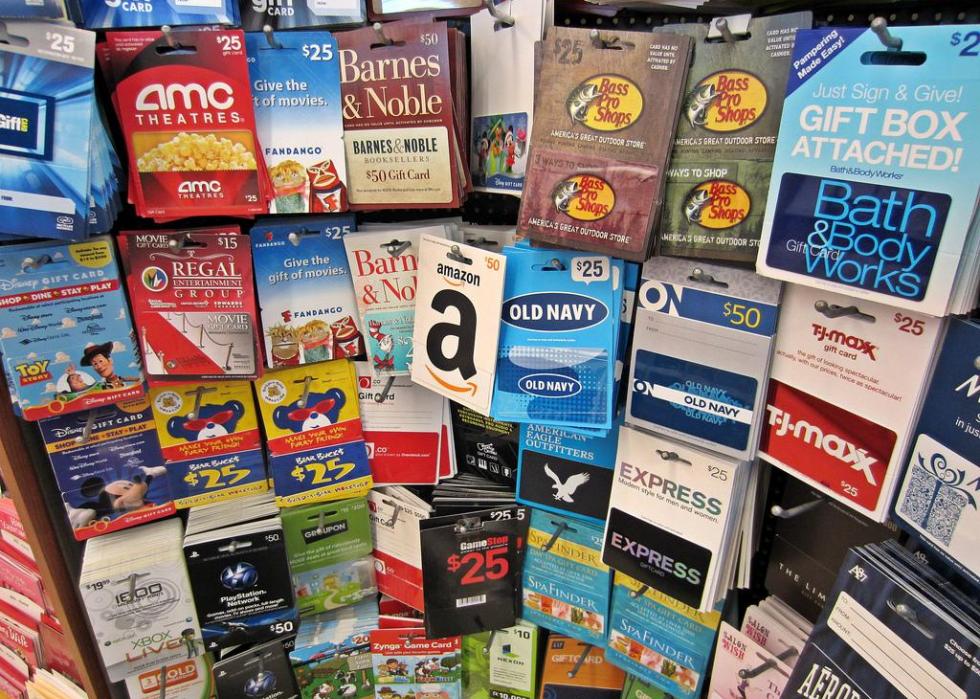
75 / 101
1994: Gift cards
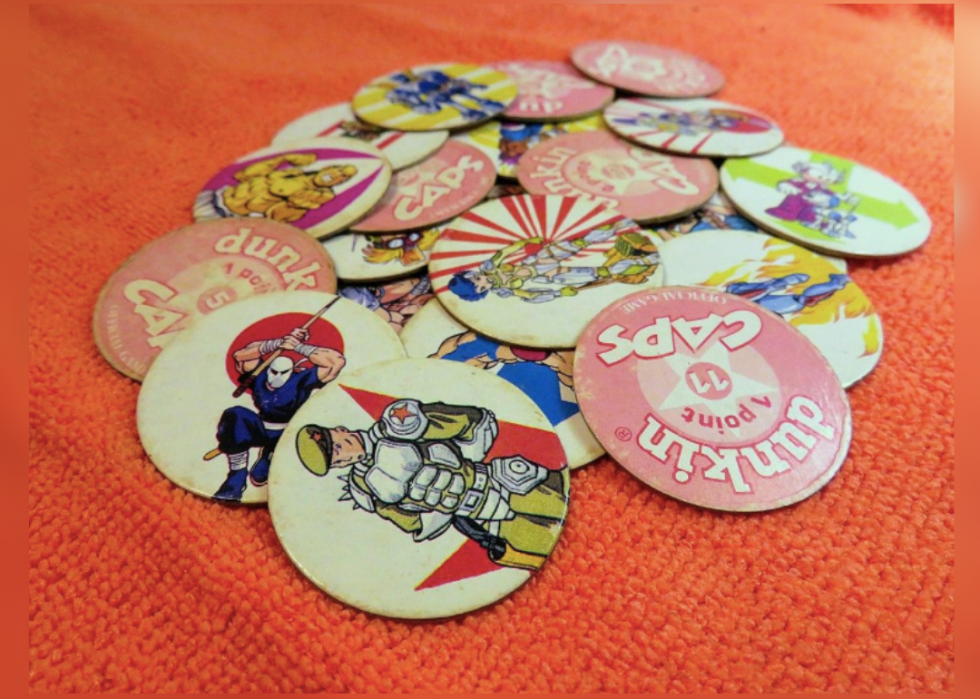
76 / 101
WikiFido // Wikimedia Commons
1995: Pogs
Stack them, slam them, flip them: The game of pogs required stacking cardboard discs, or pogs, which were then slammed with metallic bottle caps. Those that flip over were won past the successful attacker. Also known equally the milk-cap game, pogs are modeled after Hawaiian milk canteen caps. Their worldwide popularity spread every bit many designs became collectible, branded with popular characters from "The Simpsons," "Star Wars," and more than. The fad died out on its own soon after.

77 / 101
Australian Paralympic Committee // Wikimedia Commons
1996: The Macarena
Screaming teenagers would spring to their feet to dance to the "Macarena" in 1996. Written by the Spanish group Los del Rio and translated to English by the Bayside Boys, "Macarena" smashed records by remaining atop the Billboard Hot 100 chart for fourteen weeks.
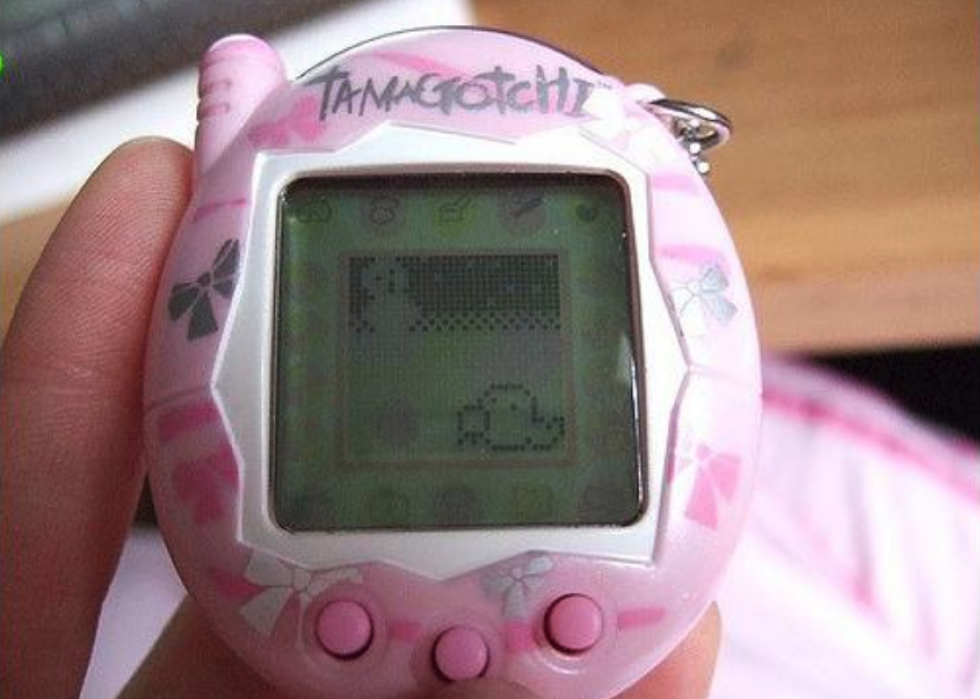
78 / 101
The Pink Princess // Flickr
1997: Tamagotchi
This egg-shaped, reckoner virtual pet on a keychain was introduced to children in the U.S. and elsewhere this year. The pets accept meters for hunger, happiness, and discipline to brandish how healthy and well-behaved they are, determined by the deportment of their possessor to play with, feed, and tidy up later on them. They could even "suffer" and "die" if neglected by their owners. Its popularity faded, but information technology was reintroduced for its 20th anniversary in 2017.
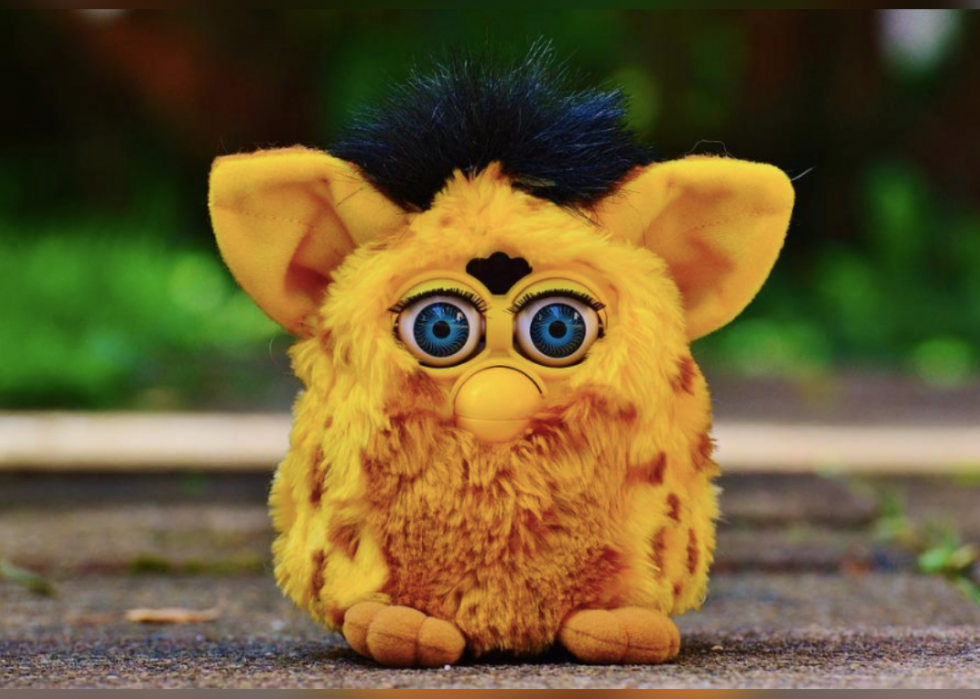
79 / 101
1998: Furby
Released in 1996, a Furby is a singing electronic robot toy resembling wide-eyed owls that later came in dozens of configurations. They were the first robotic toy that could exist trained in 24 different languages and reply to homo interaction. About 27 million were sold over the year following their launch, with 40 one thousand thousand sold during its three years of original production. Its popularity continues, with new releases boot off in 2012 and well into 2015.
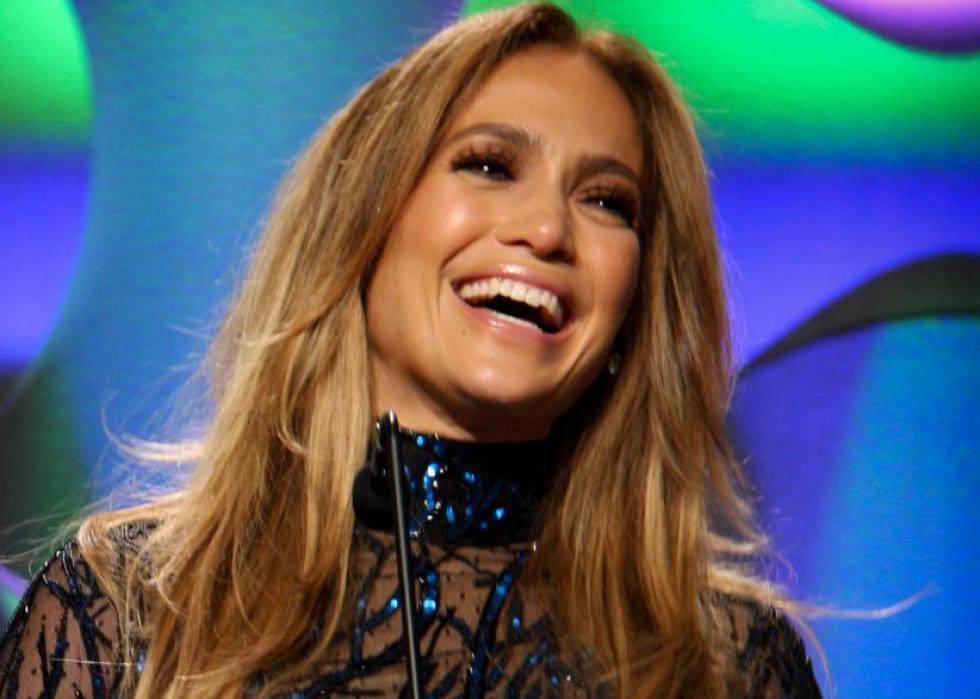
80 / 101
dvsross // Wikimedia Commons
1999: Latin pop
Generally associated with singers Ricky Martin, Jennifer Lopez, Enrique Iglesias, and others, Latin pop topped the charts this year with Martin's "Livin La Vida Loca," which hit Billboard's Hot 100 at #1 merely a month later on winning a Grammy. It stayed there for five consecutive weeks. His cocky-titled solo album, as well released this year, sold well over xv million copies worldwide. The YouTube video of the song currently has more than 243.8 meg views. Its popularity besides took off in 2017 with new artists.
You may also like: What life was like in New York Metropolis 100 years agone
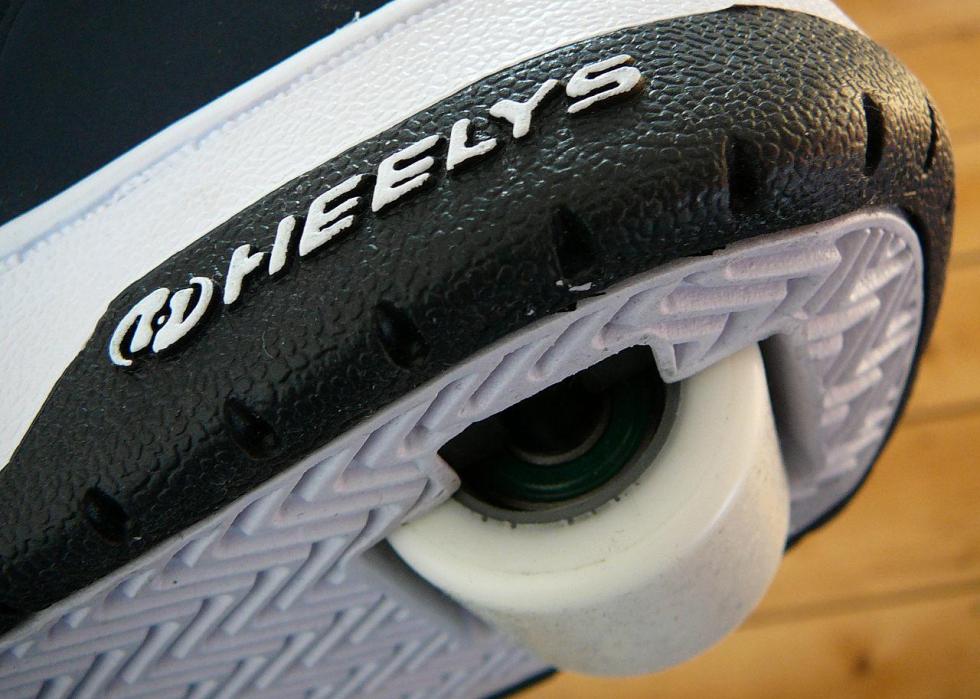
81 / 101
Dan Taylor // Wikimedia Commons
2000: Heelys
Introduced in 1999, Heelys rolled into popularity in 2000; Heelys are roller shoes that permit wearers to shift their weight to the heels to gyre, like skates. Their popularity rose speedily, with numerous tricks created just for the shoes. Although condom concerns and declining sales led to Heelys' popularity fading in 2009, they are still bachelor today.

82 / 101
2001: McMansions
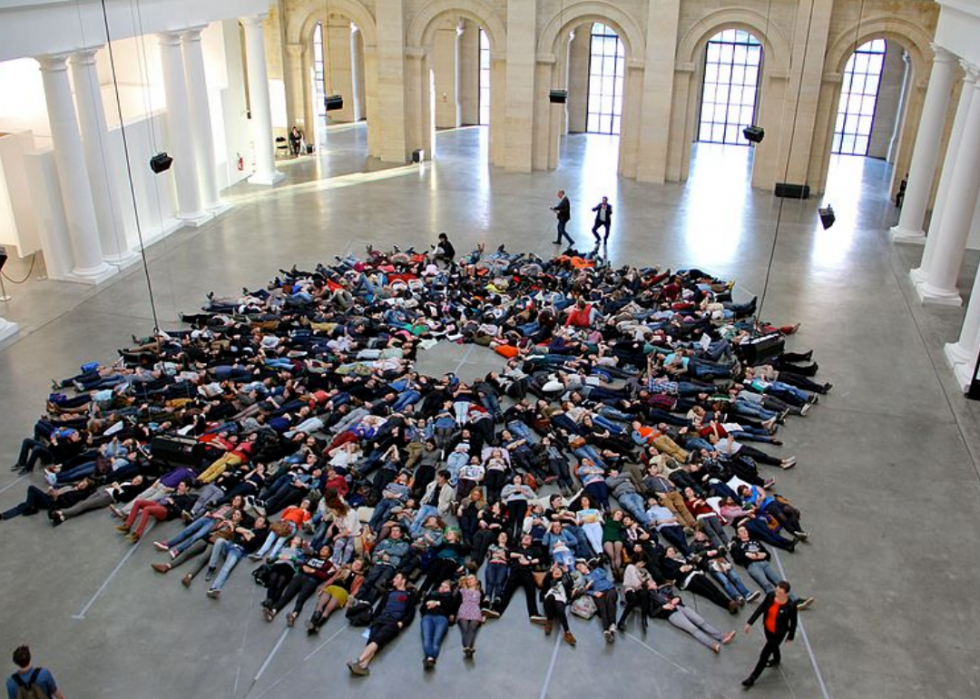
84 / 101
PBA Lille // Wikimedia Commons
2003: Flash mobs
Starting in 2003 at a Macy'due south in New York past Harper'south Magazine editor Bill Wasik, wink mobs appeared to be spontaneous, large gatherings of people in public places performing unusual acts such every bit singing a song, synchronized dancing, or pretending to exist tourists for a cursory time before quickly dispersing. Some promoted messages of sensation for causes such as disabilities. The largest was Earth Pillow Fight 24-hour interval in 2008, in 25 cities. Flash mobs' popularity faded around 2012, a turn down attributed to their commercialization.
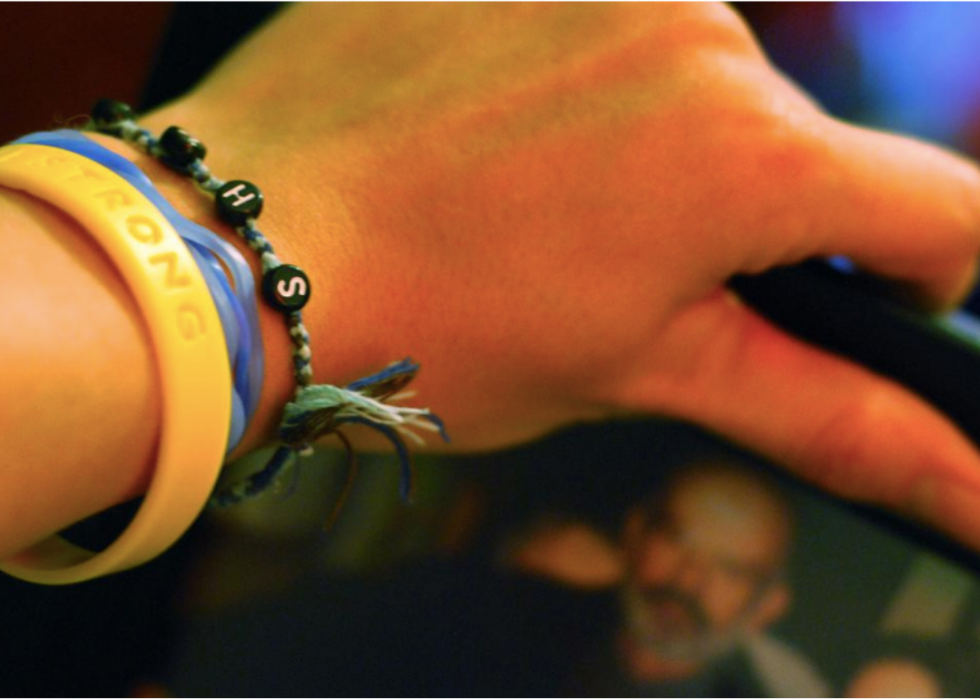
85 / 101
2004: Wristbands for a cause
The phenomenon of colorful silicone bracelets for charity started in 2004, when the Lance Armstrong Foundation issued yellowish Livestrong wristbands in back up of cancer awareness. The organization sold about 55 million bands in support of people afflicted by cancer. Others followed suit, selling them for fundraisers in various colors, such as pink for chest cancer awareness, and the tendency continues to this day.
Yous may as well like: How Christmas is celebrated effectually the globe
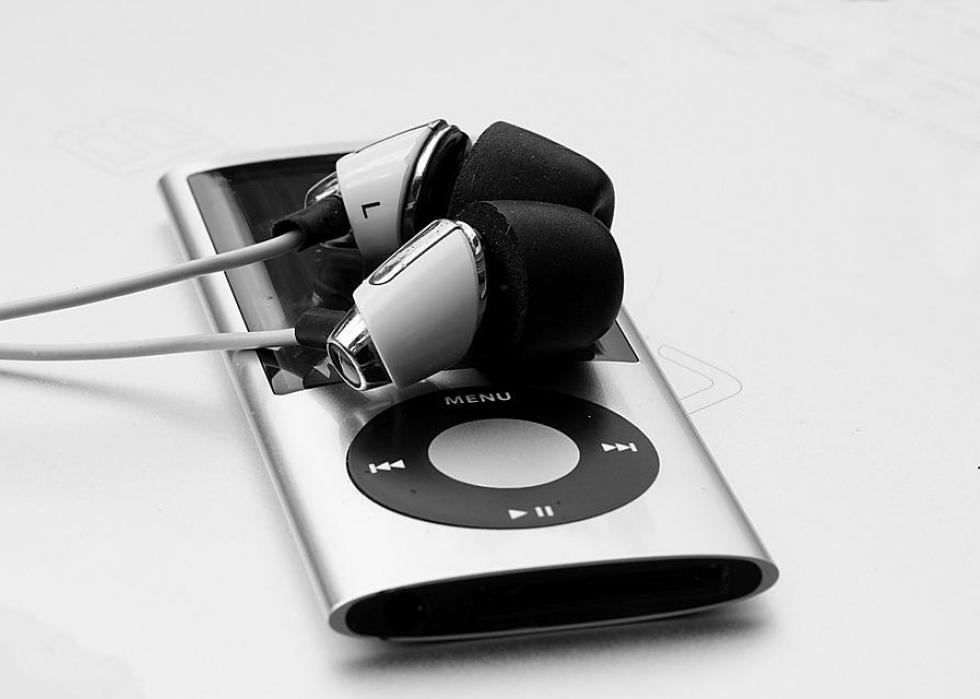
86 / 101
2005: iPod Nano
The outset generation portable media player iPod Nano was introduced in 2005 with a media event with Steve Jobs. Virtually forty million units were sold inside the yr, and sales peaked at well-nigh 55 million units in 2008. The seventh and last generation Nano, building on before technological upgrades, was released in 2012, but sales keep to decline until its discontinuation in 2017.
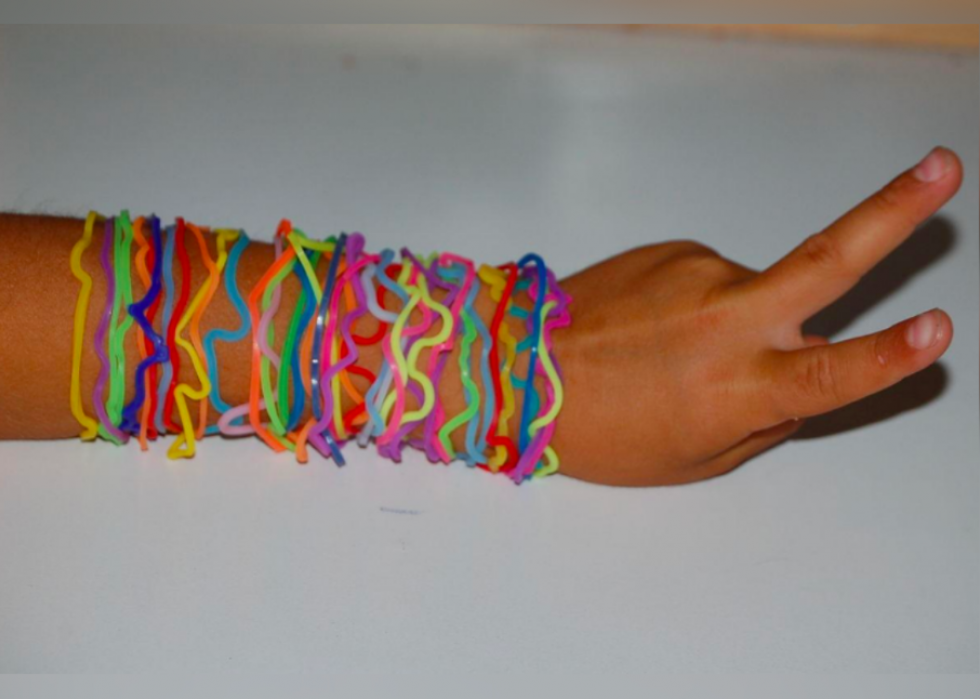
87 / 101
Scot Scoop // Wikimedia Commons
2006: Empty-headed Bandz
A type of rubbery bracelet sold in packs past the dozens, Silly Bandz came in shapes like animals, horseback riders, and other symbols. They became a national phenomenon in 2006, and by 2008 were selling about a million packs a calendar week. Sales slowed by 2010, effectively ending the craze.
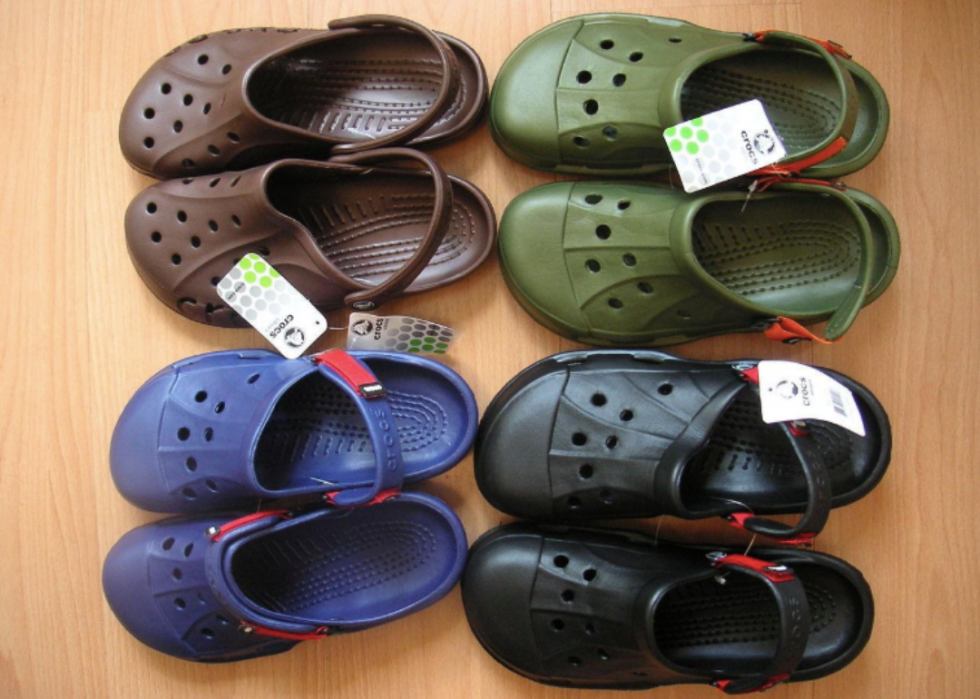
88 / 101
2007: Crocs
Endorsements past at present shunned Chef Mario Batali helped spark a buying rage of Crocs in 2007. First introduced in 2004, the plastic, hole-pocked shoes, which come in numerous brilliant colors, sold about fifty million pairs in 2007 when sales reached $850 million. Economics slowed the shoes' sales past 2008, but new and evolving designs go on the shoes popular, especially for professions that crave extended periods of time on your feet, such as nursing.

89 / 101
2008: Snuggies
About $lxxx million worth of sleeved blankets called Snuggies have been sold since 2008—4 million of which were sold by early 2009. Snuggies helped spawn Facebook groups, TV spoofs, and YouTube videos. More than 22,500 Cleveland Cavaliers fans wore them, and 40,000 appeared at an LA Angels baseball game in 2010. Just in 2018 the brand's owners were fined $7.2 million for deception on business relationship of a misleading "buy one, become ane gratis" campaign.

90 / 101
2009: Hipsters
The Urban Lexicon defines hipsters as a "subculture of American consumer for whom the idea behind the marketing holds more than value than the product being marketed." In other words, hipsters desire to exist deeper than only the mainstream—but may cease upwardly coming off every bit pretentious. The trend peaked in 2009, when Time mag and the New York Times (among many publications) satirized and discredited the fad. Hipster trends thrived in New York Urban center neighborhoods like the Lower East Side and Williamsburg but spread across the nation. While the word isn't as popular today, "hipster" is still used to jokingly describe young adults who appear to endeavour besides hard to exist above society.
You may also like: l ways America is projected to change past 2050

91 / 101
2010: Aroused Birds
Considered the #i paid iPhone video game of the new decade, Angry Birds involves flinging birds to attack greedy green pigs that take stolen the birds' eggs. By October, the game had sold 12 1000000 copies on Apple tree's App Store, generating numerous spinoffs and other merchandise since its inception in 2009. Globally, the game has been downloaded more than 2.5 billion times. Revenues from the game declined in 2014 when merchandise sales fell, and a 2016 movie accommodation landed poorly with critics and audiences alike.
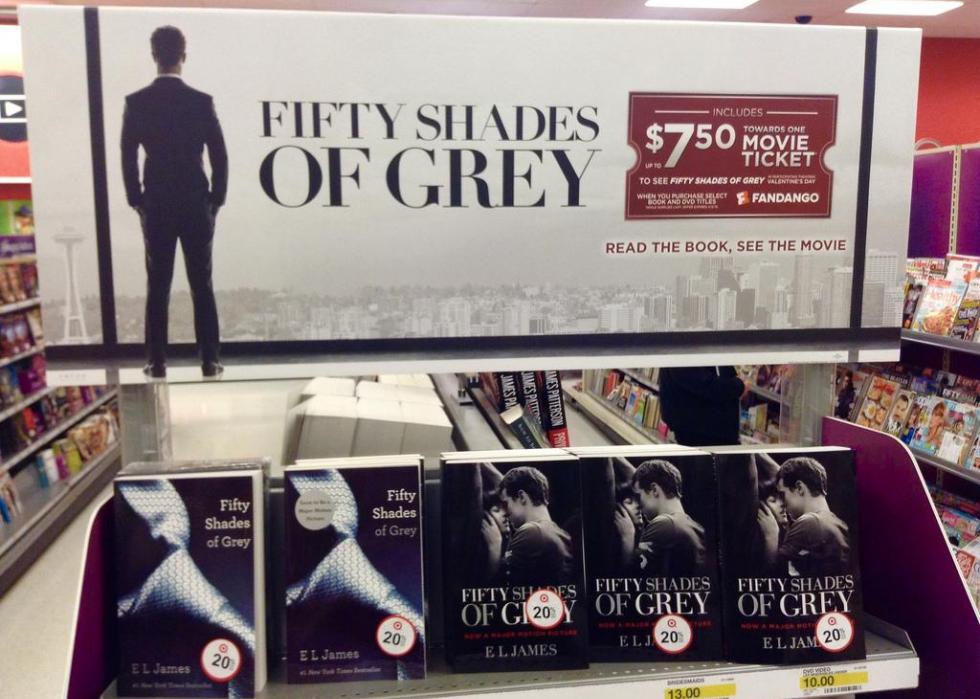
92 / 101
2011: 'Fifty Shades of Grey'
The R-rated romance "Fifty Shades of Grey" became the fastest-selling novel of all time in 2011, and has since spread to a series of books and movies that triggered widespread controversy over their content and implications.
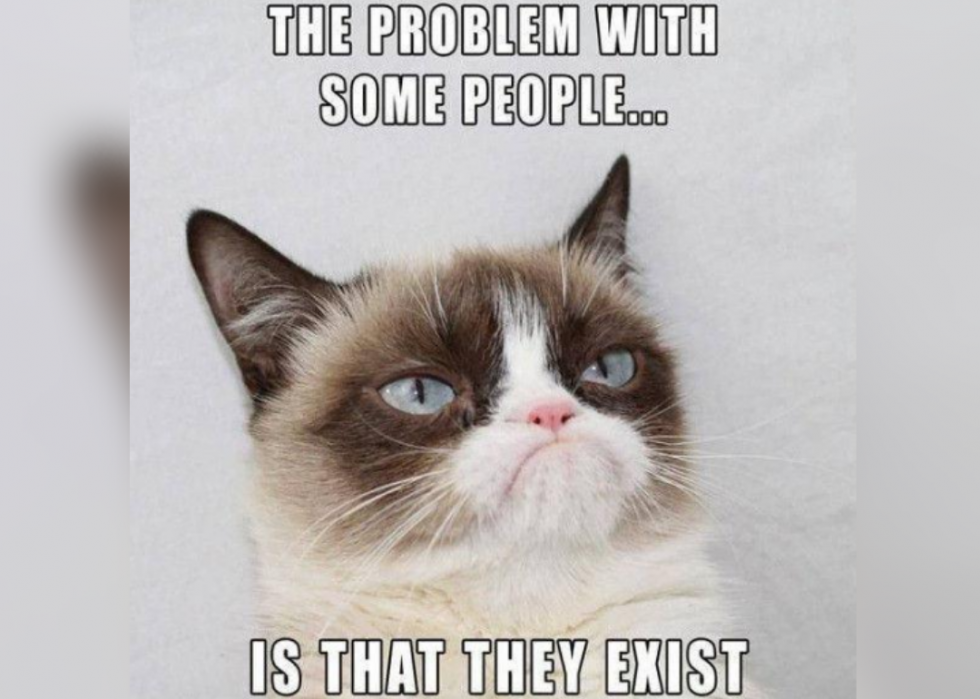
93 / 101
2012: Grumpy True cat
A cat named Tardar Sauce with dwarfism and a grumpy facial expression became an internet sensation in 2012. It all started when the owner's brother posted a photograph of her on Reddit, which led to a barrage of memes—shortly enough, Grumpy Cat had an agent, books, t-shirts, mugs, calendars, and Tv set and moving-picture show appearances.

94 / 101
cumi&ciki // Wikimedia Eatables
2013: Cronuts
A cross betwixt a croissant and a cream-filled donut, the cronut was created by New York baker Dominique Ansel in 2013. He simply fabricated nearly 300 a 24-hour interval; customers camped out overnight to get the treats, which garnered up to $100 a popular on the blackness market.

95 / 101
Chris Rand // Wikimedia Eatables
2014: Ice Saucepan Challenge

96 / 101
2015: Human being buns
A human being bun is simply what it sounds like—a men's hairstyle involving hair tied up on the pinnacle of the caput. Theories credit their rising in popularity to celebrity usage, with the likes of Joakim Noah, Chris Hemsworth, Leonardo DiCaprio, and Orlando Bloom all sporting the expect.

97 / 101
2016: 'Pokemon Get'
The hottest mobile game of 2016 involved using the GPS on mobile devices to locate, capture, and do battle with virtual creatures called Pokémon. "Pokémon Go" chop-chop became a global phenomenon that stood as i of the virtually profitable and most-used apps of the year with downloads topping 750 meg but a year after its release.
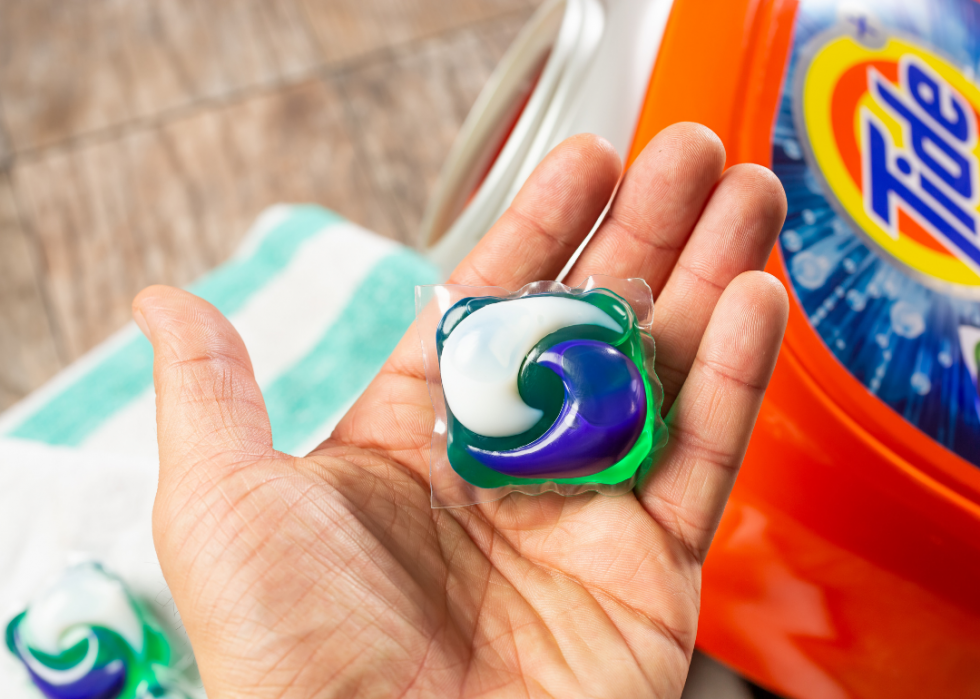
98 / 101
David Tonelson // Shutterstock
2017: Eating Tide Pods
The dangerous fad of eating Tide Pods, modest, colorful detergent pods that almost resemble candy, went viral on Twitter and YouTube at the stop of this year. Starting as a joke, some individuals went as far equally to swallow them; but by early on 2018 it became articulate that eating caustic chemicals was no laughing matter.
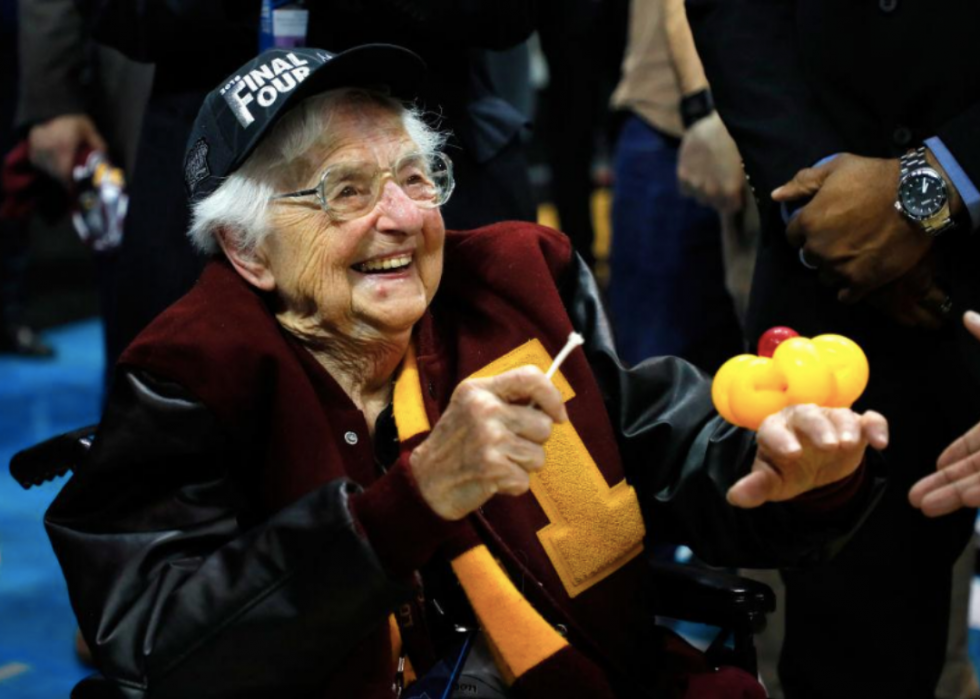
99 / 101
Kevin C. Cox // Getty Images
2018: Sister Jean merchandise

100 / 101
2019: TikTok
This app is ane of the fastest social media platforms in the world and is particularly popular amongst Generation Z. Users post brusque-course videos of between 1 to 60 seconds featuring everything from dances to surgery on a banana . According to Statista in the The states, user growth for 2019 was 97.5%.

101 / 101
OlhaTsiplyar // Shutterstock
2020: The Booze-free motion
Many people have gone alcohol-free after realizing the negative effects of alcohol and how information technology permeates every part of our culture including mommy-vino culture . Millennials seem especially interested in the movement and many bars around the country are including creative and delicious mocktail options for those who chose to go alcohol-free.
You may likewise like: What homes are like in 25 places around the earth
Trending Now
© Stacker 2022. All rights reserved.
0 Response to "Popular Fashion Trends From 1975-1985 When Was Big Hair in Style"
Post a Comment